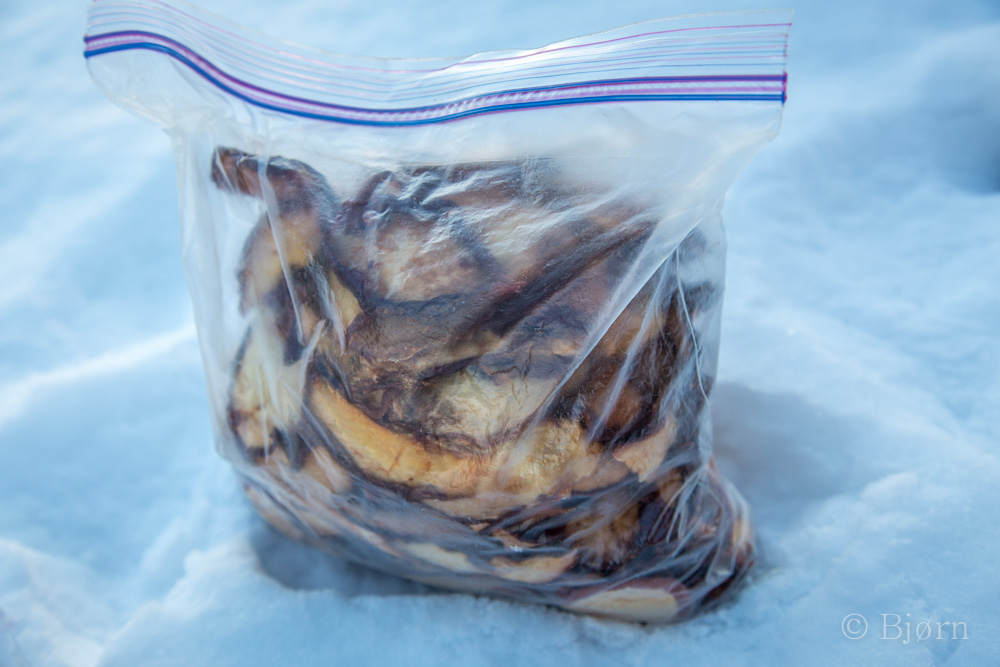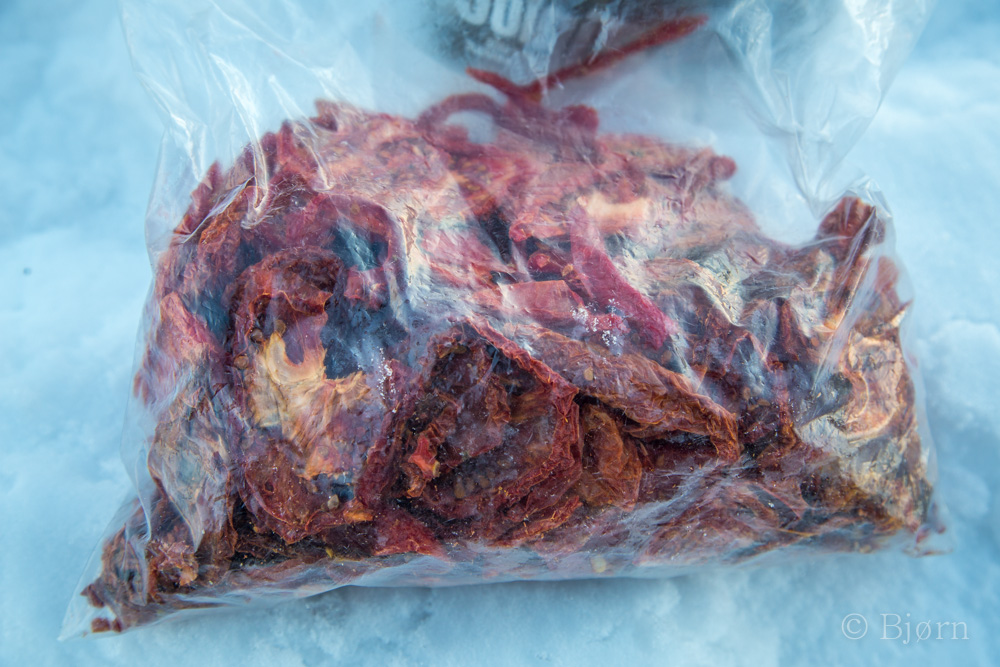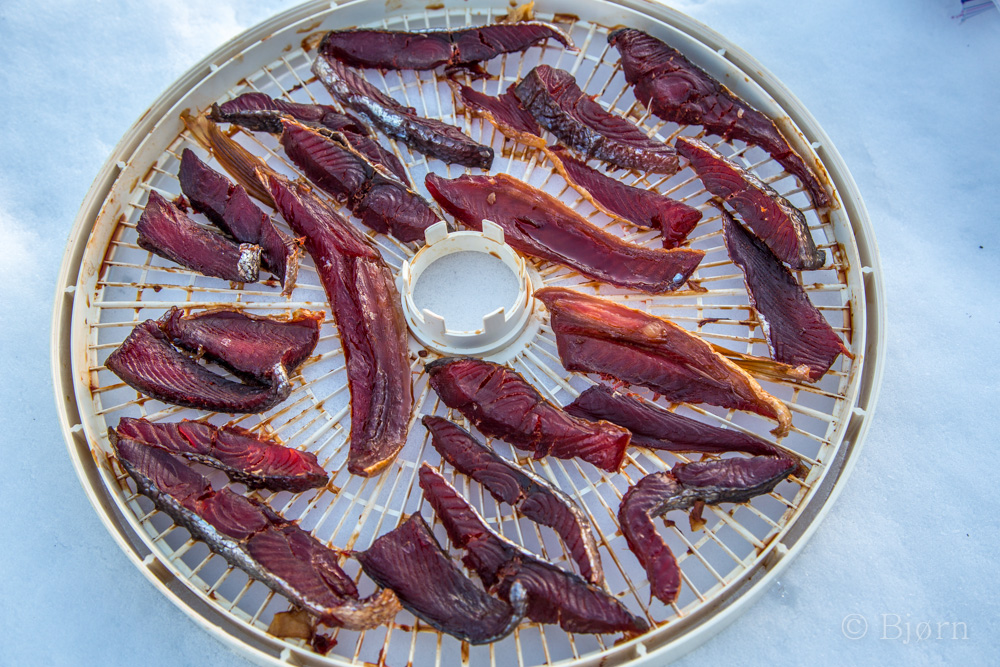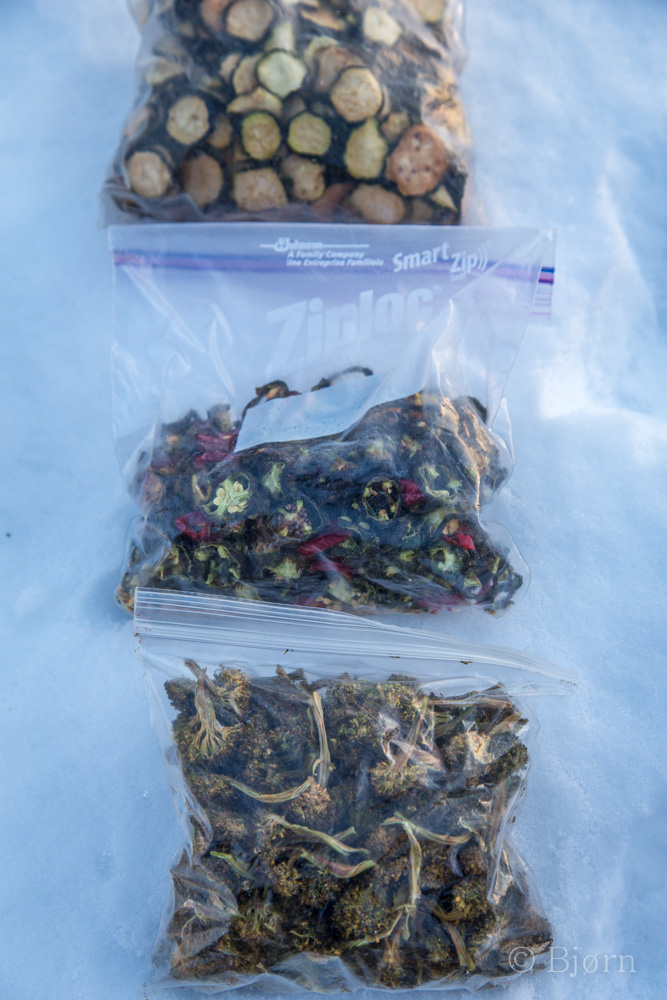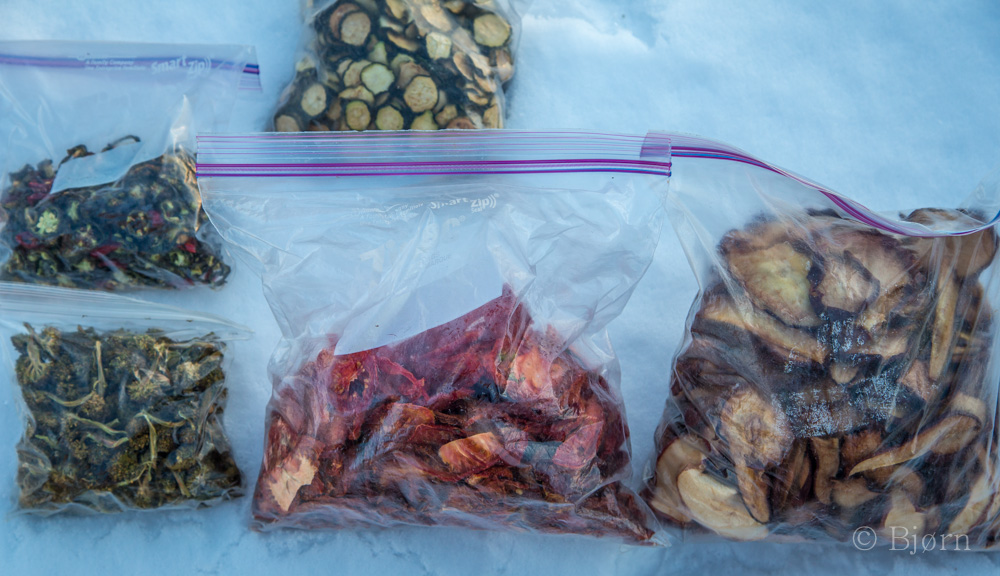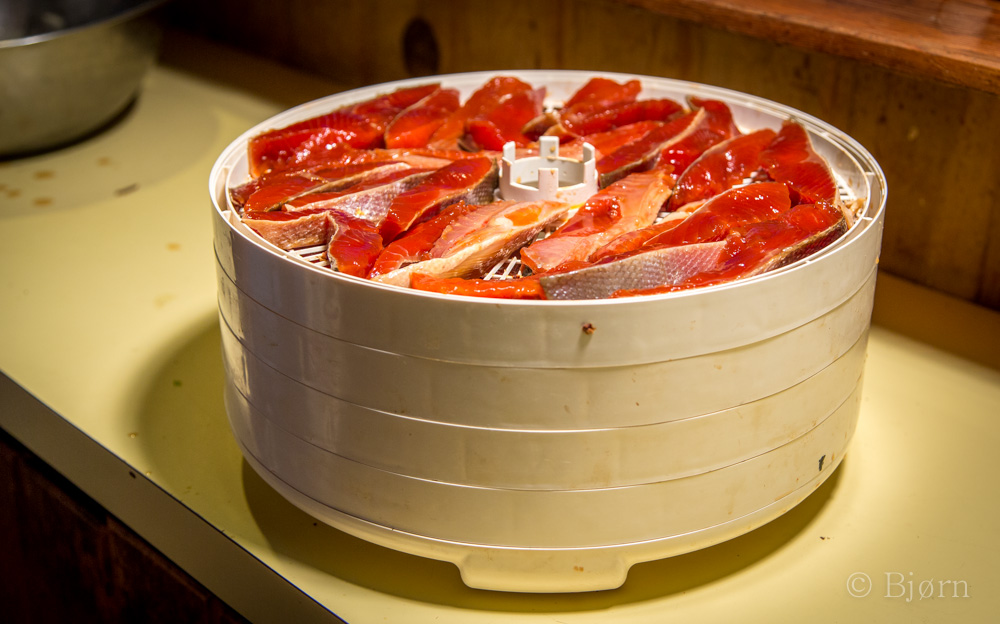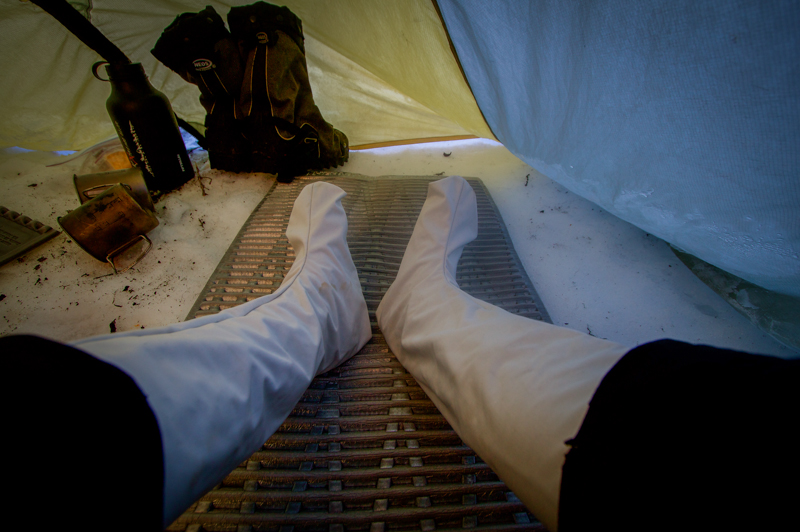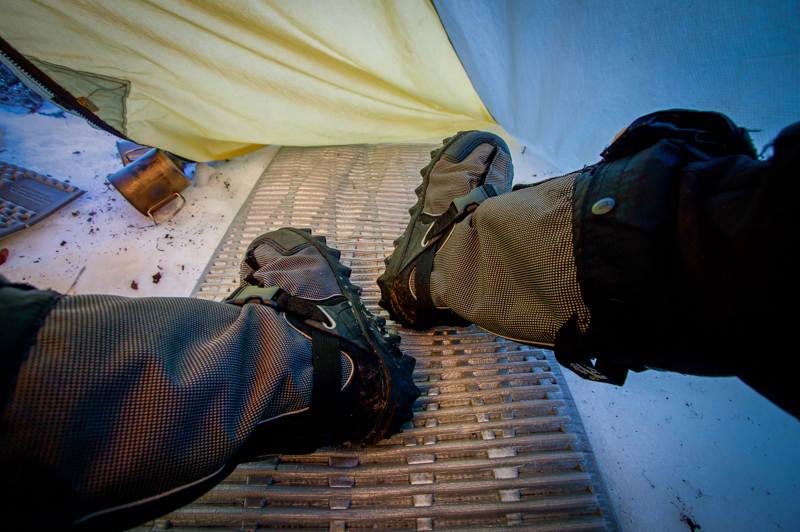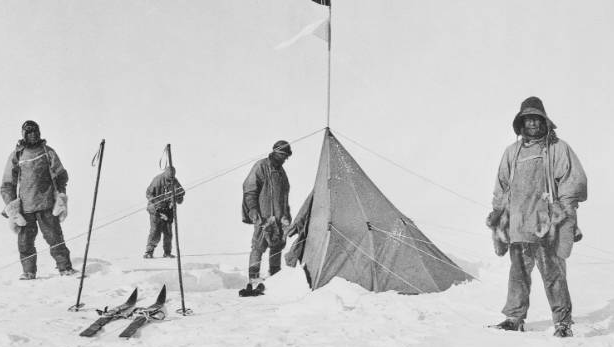North to the Future
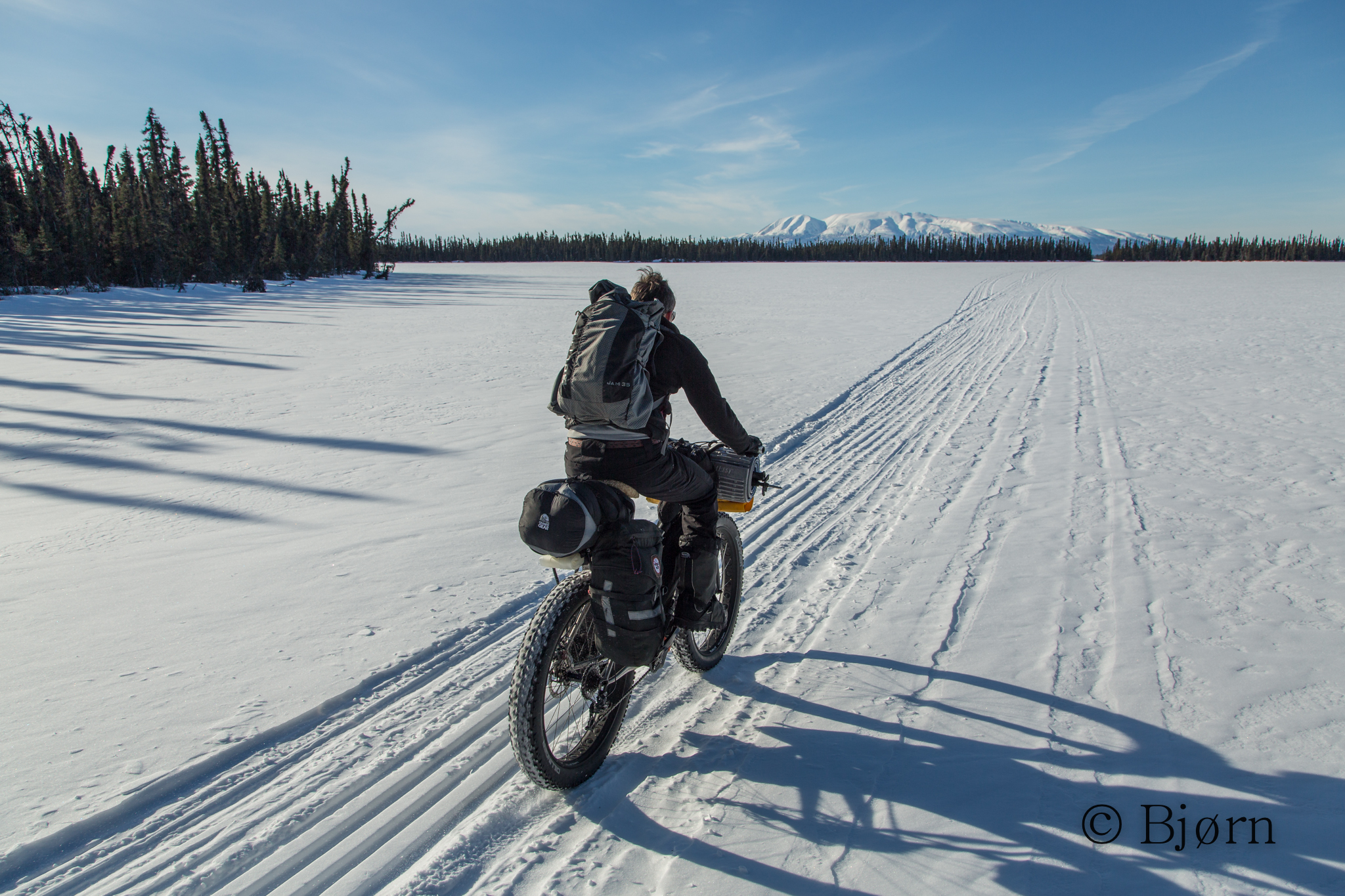
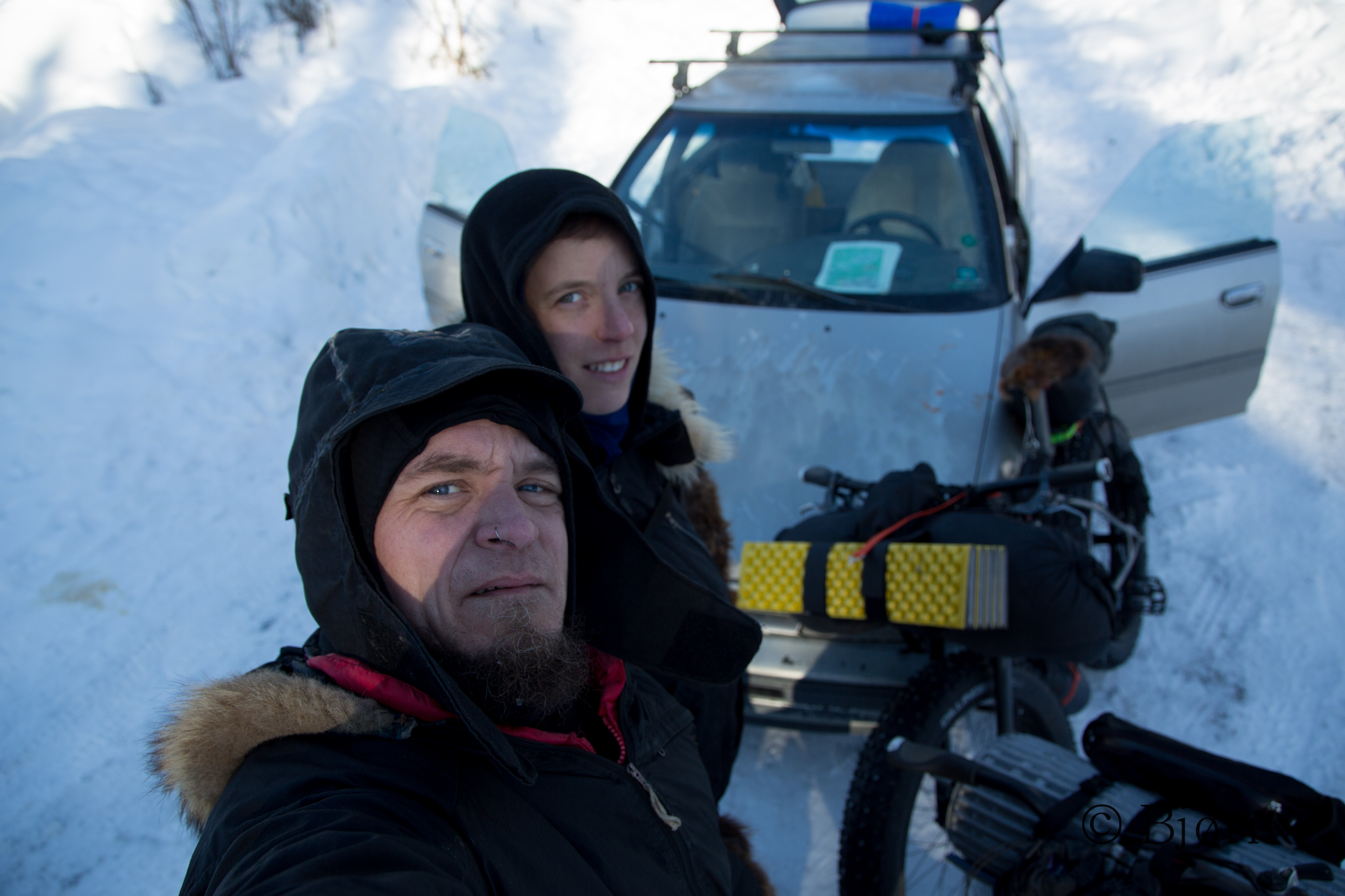
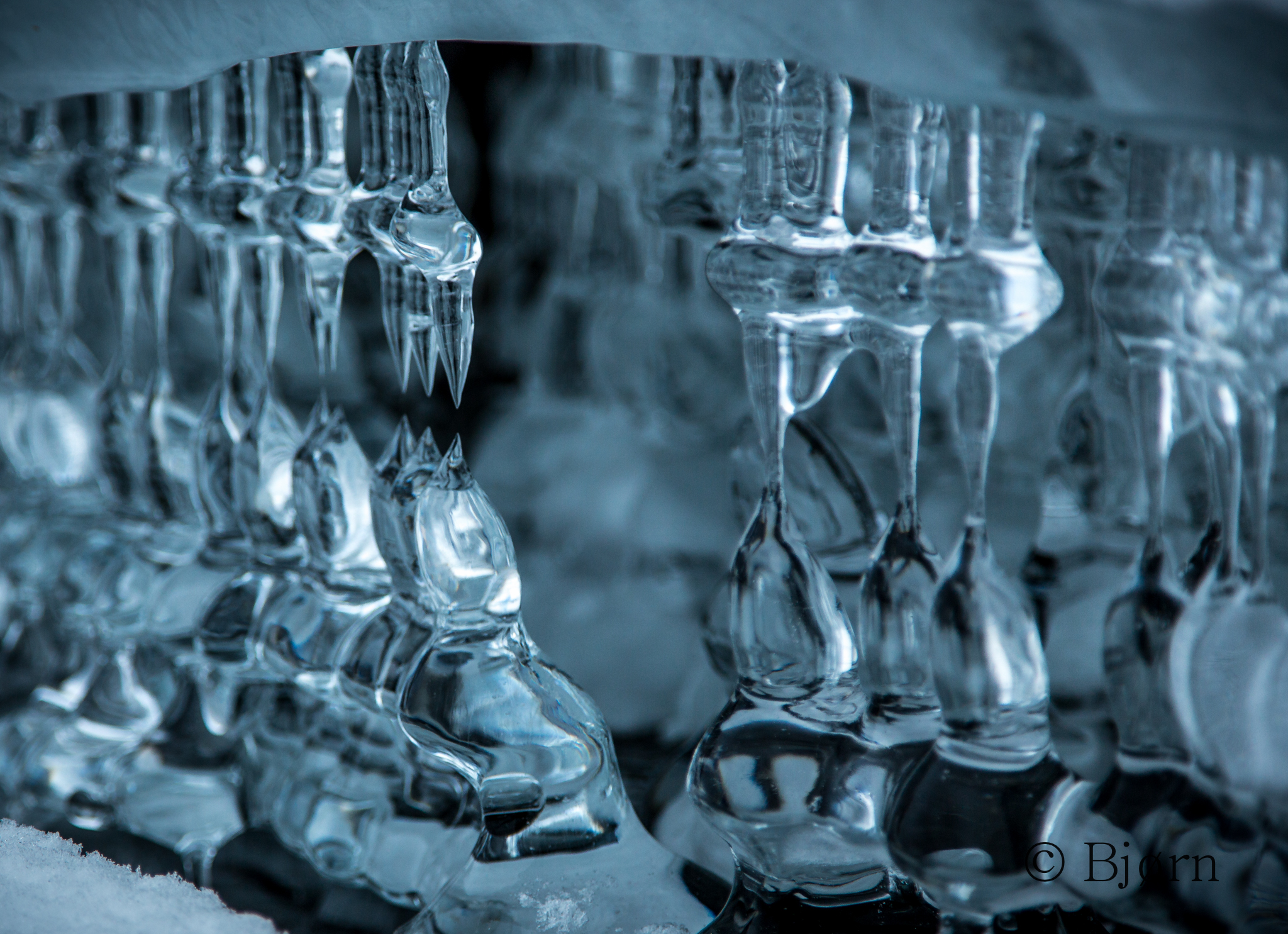
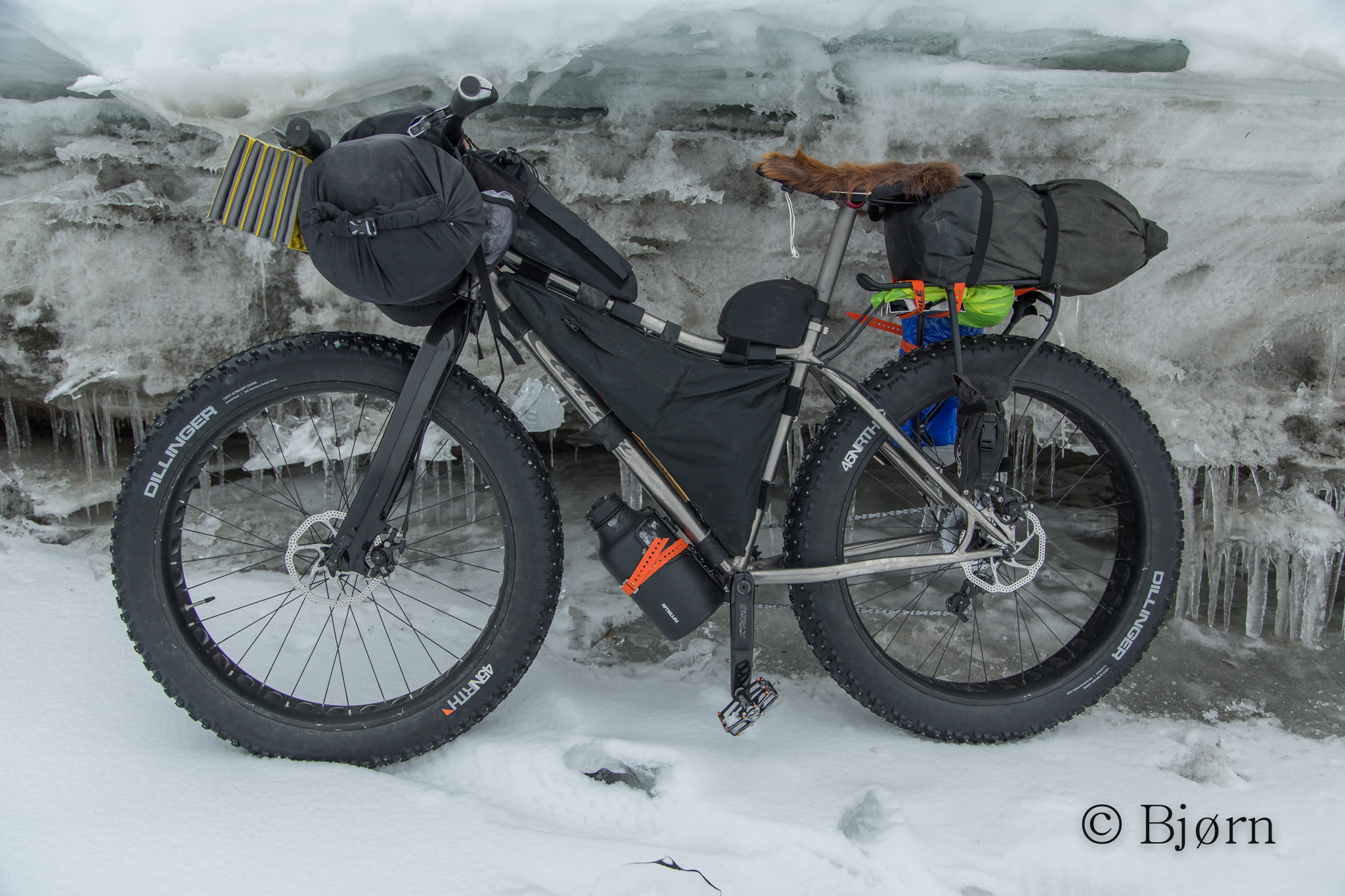
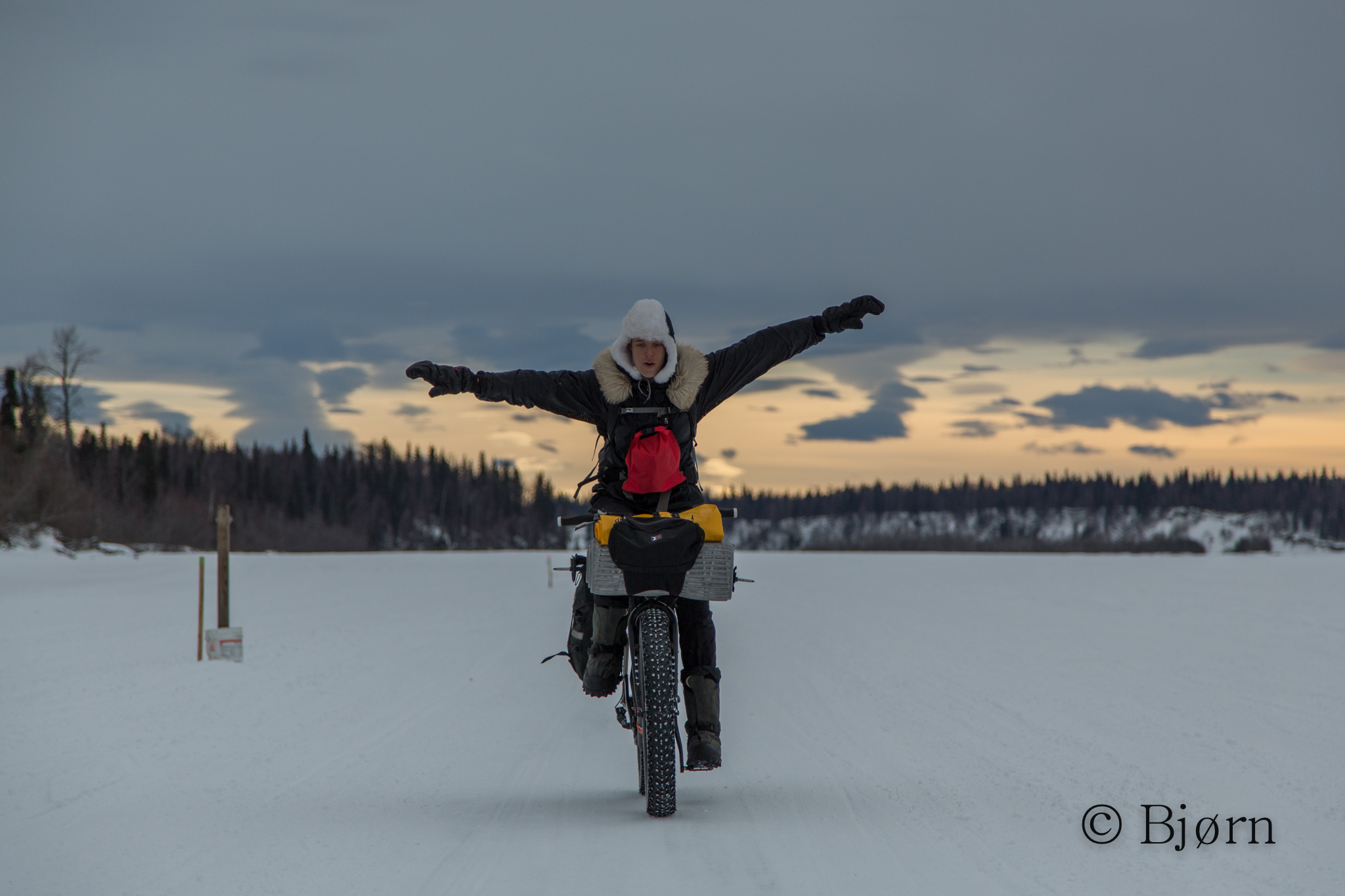
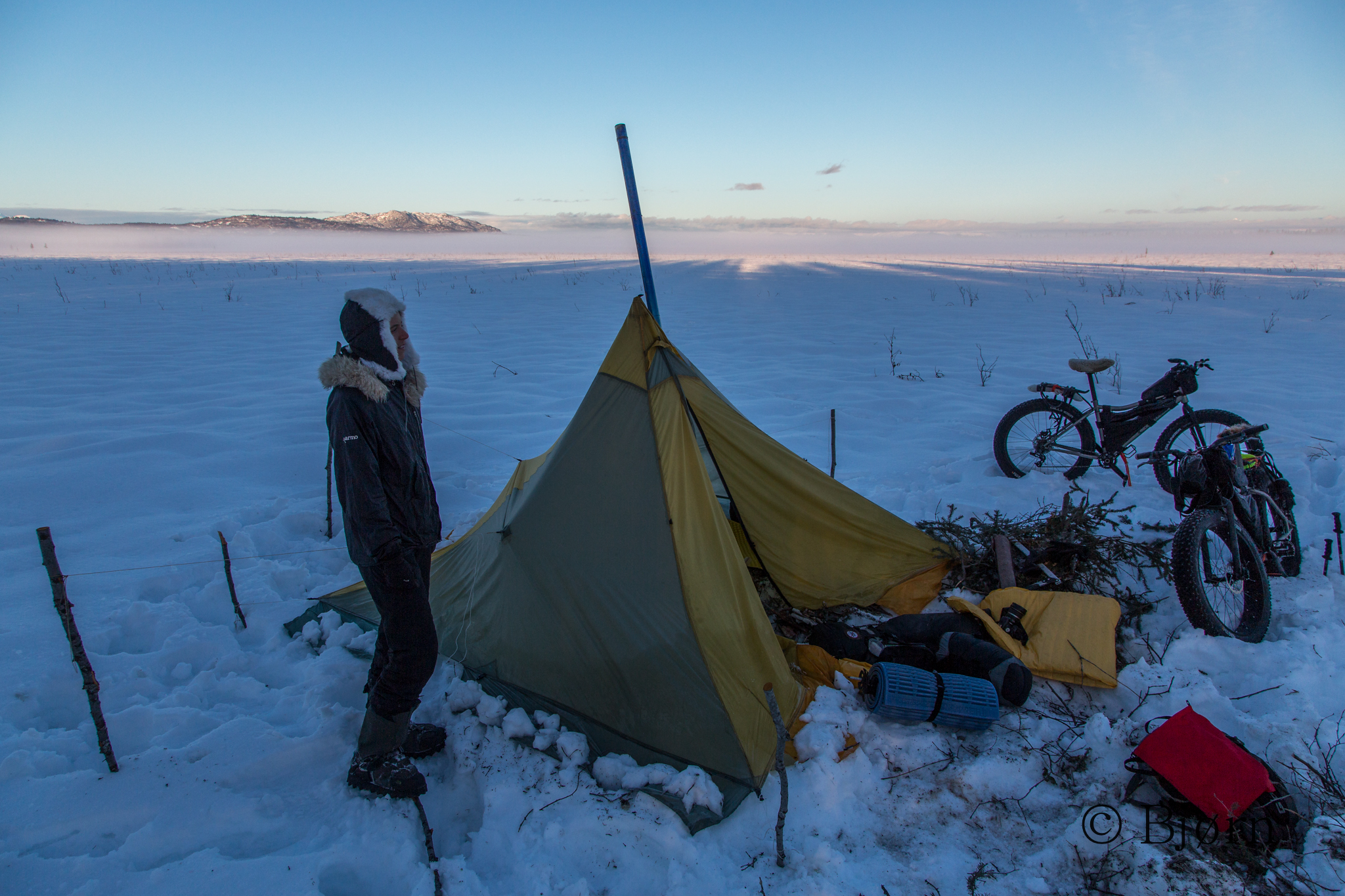
When the dawn breaks we’ll be gone. Two years of meditation, hard work and preparation have finally manifested into reality – tomorrow we will begin biking to the arctic.
Months of serious intention go into these kinds of endeavors. Last year we had just begun to lay the groundwork for a similar expedition when I was confronted with a terrible reality. What we all assumed was leftover effects from a concussion my mother had had in the summer, was actually much more serious. The MRI, revealed a gleoblastoma brain tumor - a particularly nasty one. The words brain tumor land on your lap with a sickening thud and the world looses color and charm.
When the deafening roar of blood in my ears quieted some, we dropped everything and hurried to her side. The tumor spared some of her for me but it rapidly wore her down. She died with her family holding her and staring – mortified, as she took her last gasp.
Although she is gone, I feel her near and believe she would be excited and enthusiastic about this adventure. We dedicate it to her.
A month worth of food awaits us along our route and we have left more with friends to send, if need be. Our bikes are packed, maps are printed and batteries are charged. From here out, nature dictates.
For anyone who would like to follow along, we will be transmitting as we go with a DeLorme InReach tracking device. We also hope to post updates from the trail but they will depend on borrowed internet.
Thank you to everyone who helped us bring this trip to fruition. We are forever grateful for your friendship and patronage.
Out-biking climate change
We have made it to Skwentna and have enjoyed our first of many trail cheese- burgers. The trail is fast and hard with very little snow over ice, which is a good thing because it's 40 degrees today. If there were more snow it would be sloppy and we would be pushing, but as is we are merrily cruising along in what seems like late April weather.
We have a food drop here and our next one will be at Rainy Pass Lodge. If all goes as planned we will let the dogs pass us there unless the trail is great and then we may hurry on over the pass.
It was strange to get rained on in our shelter last night but with the wood stove going, we were able to dry our damp gear. All our equipment is performing amazingly well so far and as of yet no body ailments.
It feels amazing to be under way after all the time thinking about the trip - we're finally doing it.
Beasts of Burdon
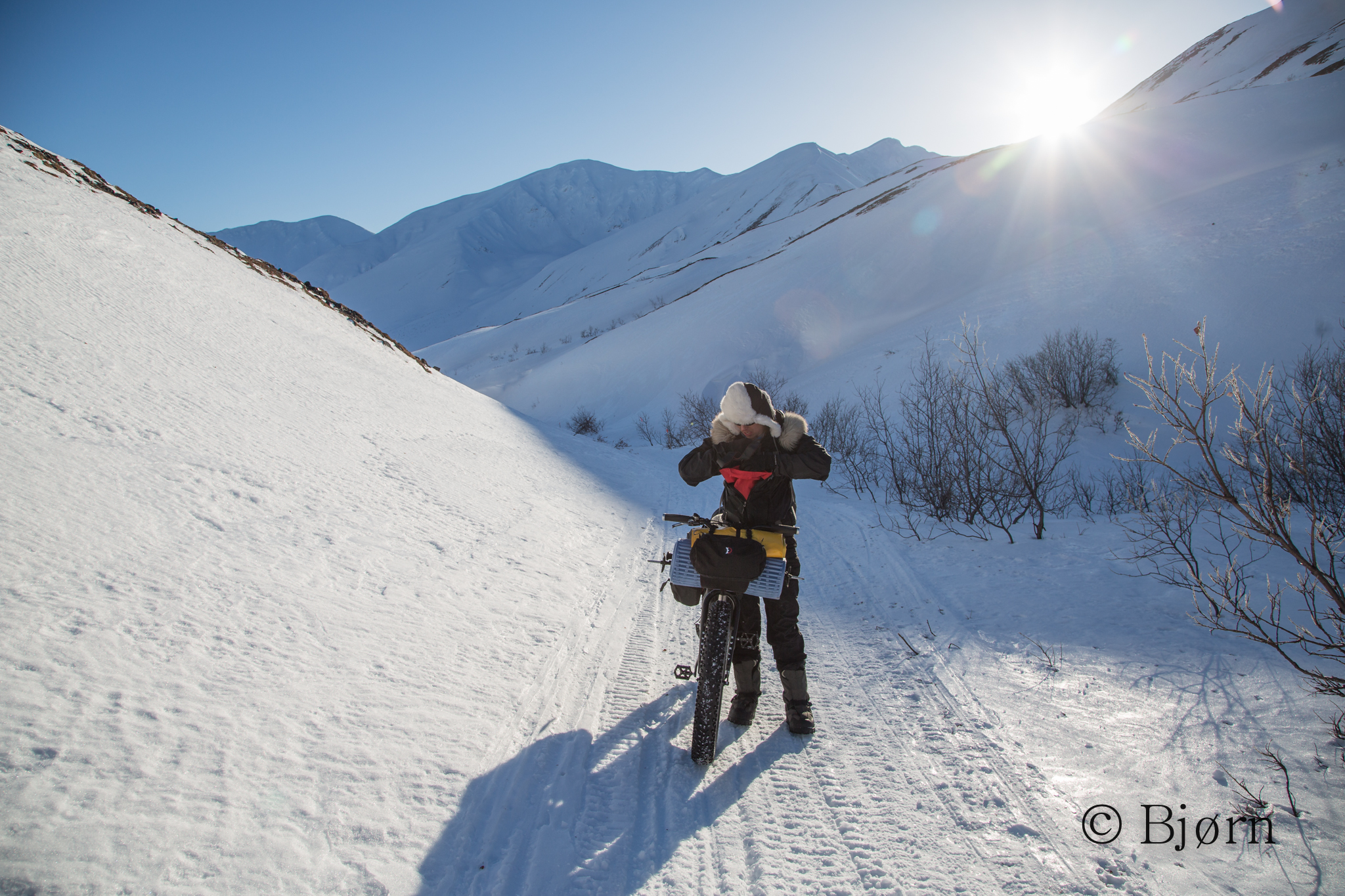

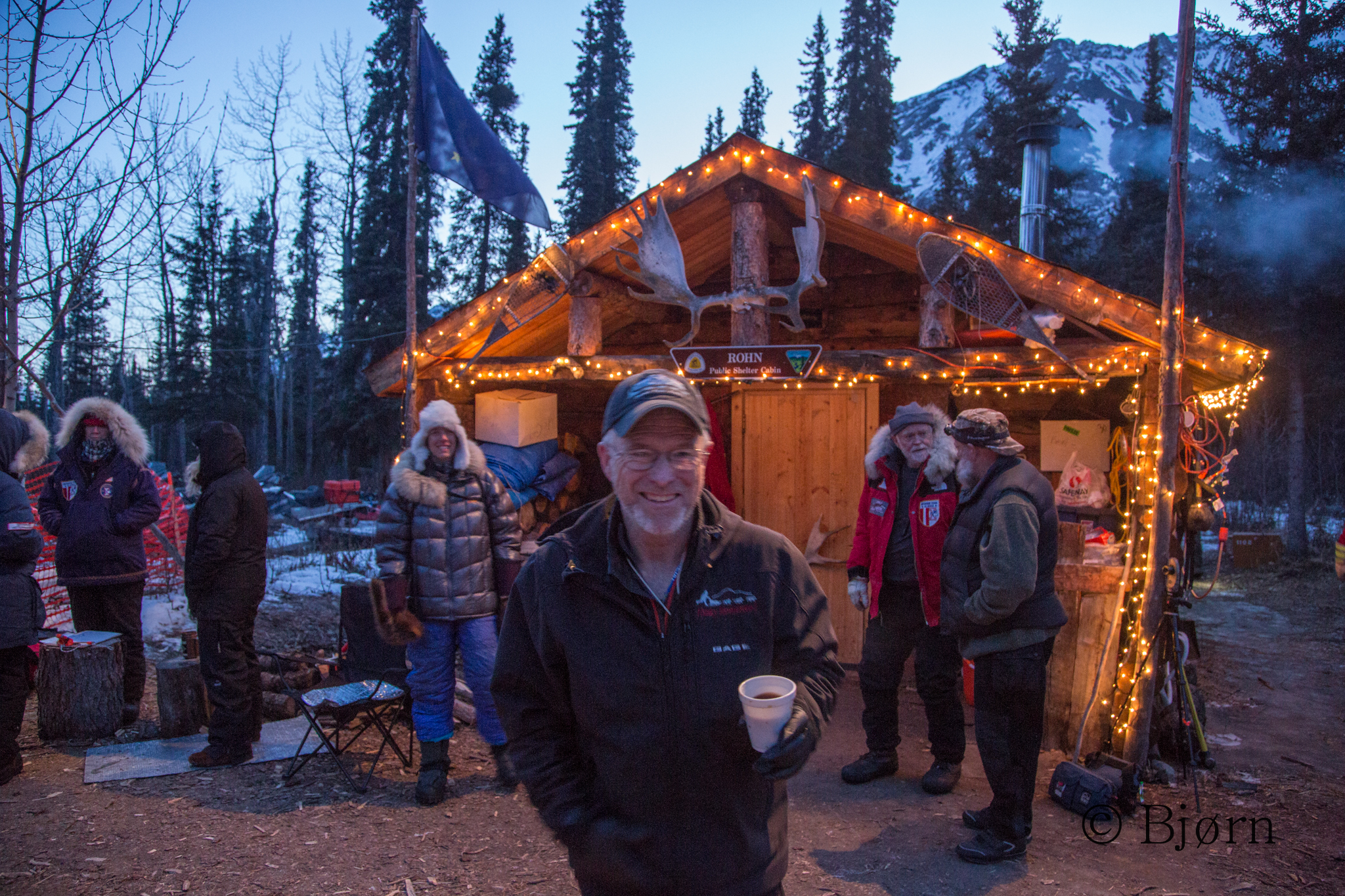
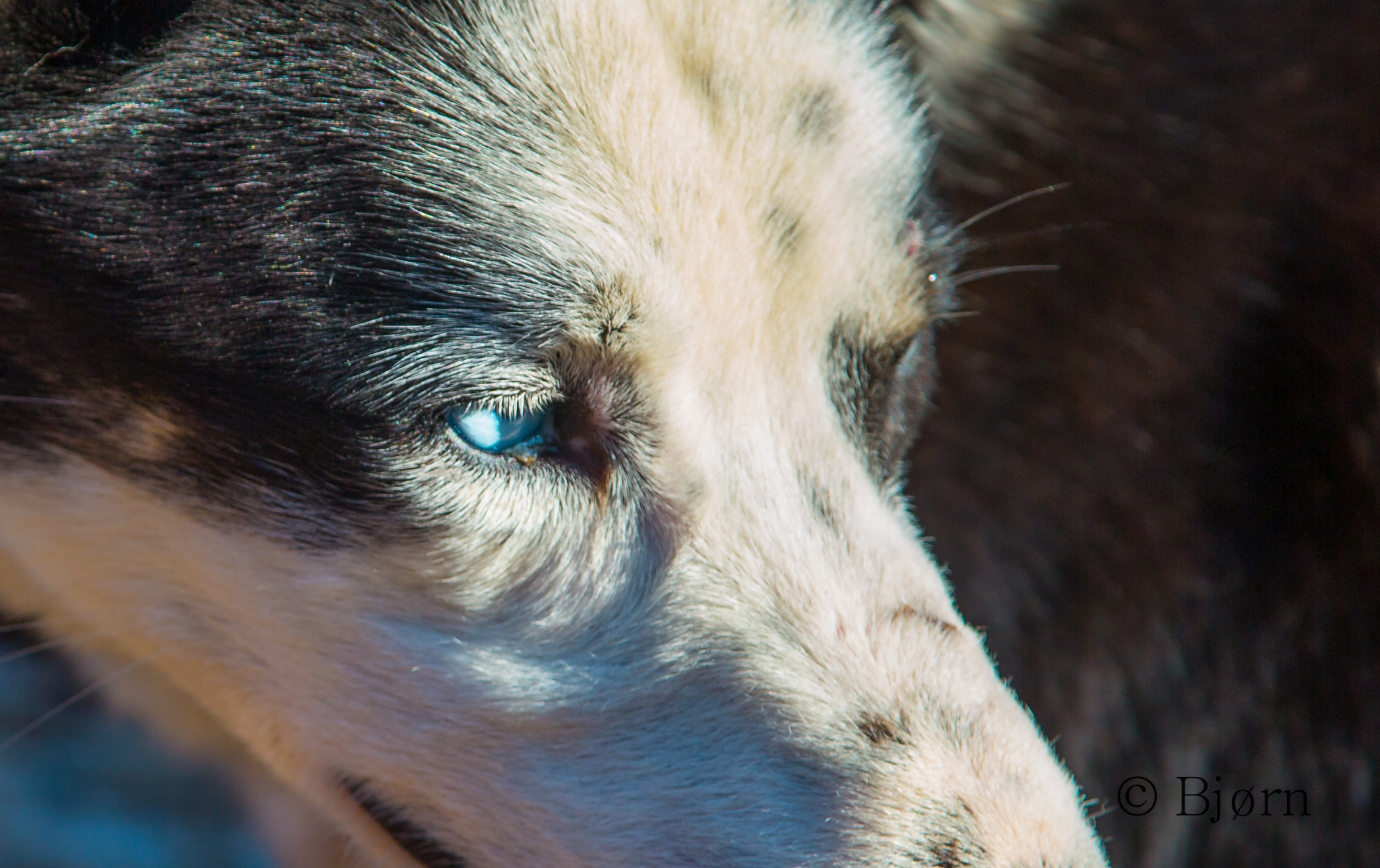
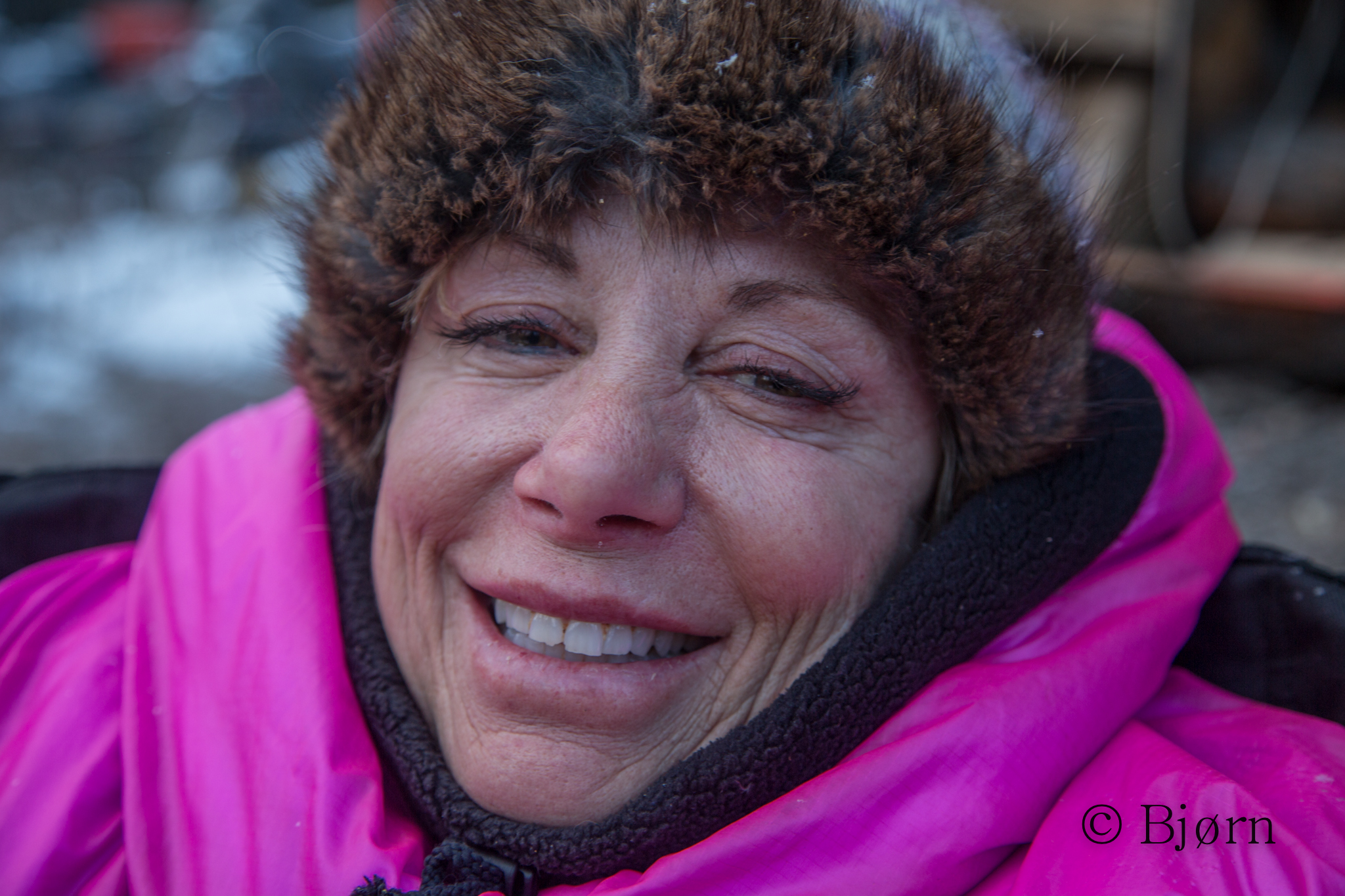
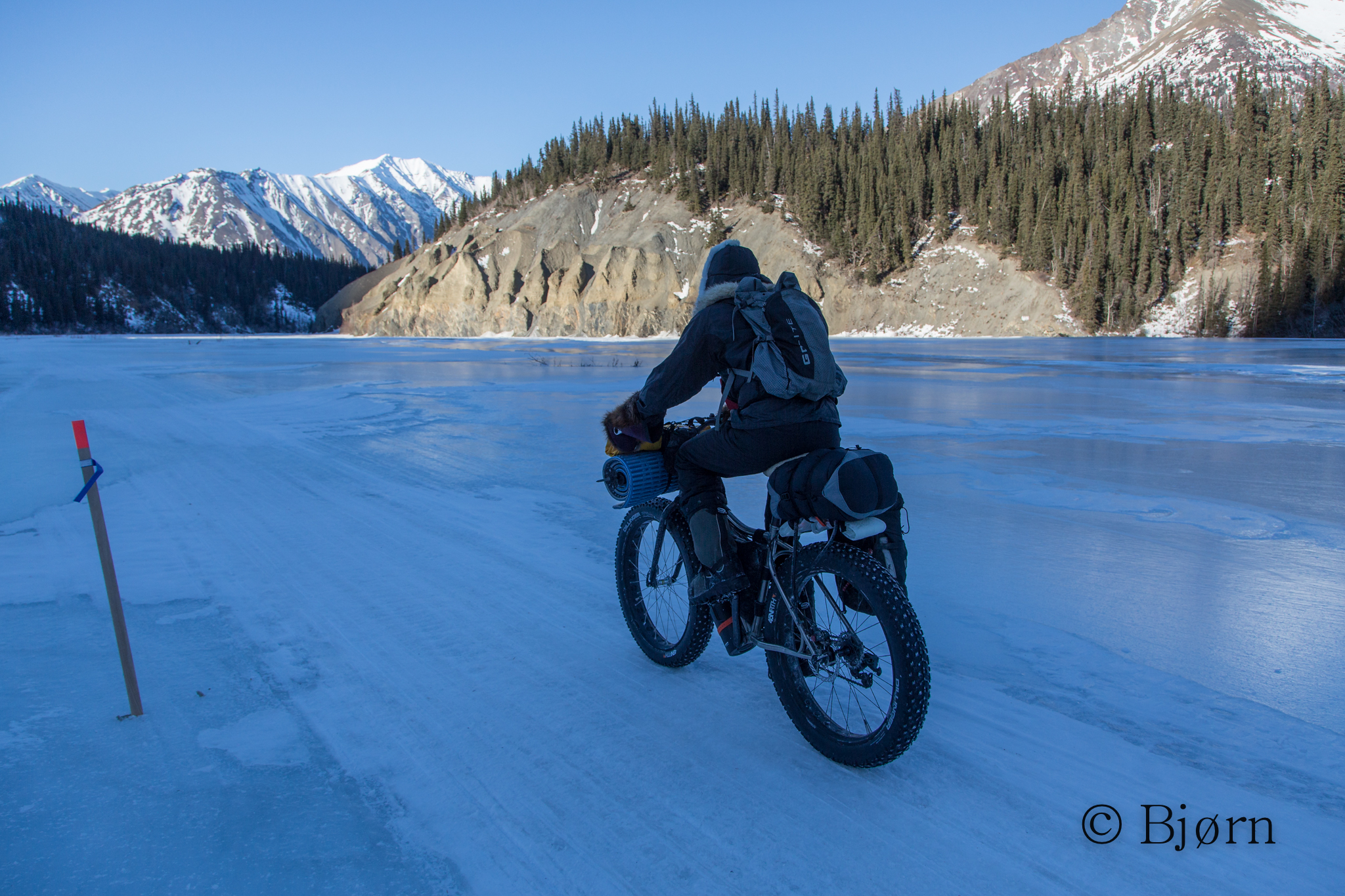
In 2011, Kim and I rode the Iditarod Trail to McGrath. On that trip we were equally prepared, conditioned and enthusiastic, as we are now. On that trip however, we were hot out of the gates. As a result, Kim strained her knee early and it never healed, in fact it became worse. While planning for this trip we were both nervous about her knee and resolved to go easy at the beginning. So far, the strategy has worked gangbusters. We are becoming leaner and meaner by the day.
With the trail being hard and fast, we decided to head over Rainy Pass before the dogs and planned to stop In Rohn to let Iditarod come through. Descending Rainy was remarkable in that there was no snow, lots of ice, open water, loads of roots and rocks - perfect for bikes, terrible for dog mushers.
When we arrived into Rohn, the checkers, handlers and assorted media were all in position for the first teams to start coming through and we were enlisted to be 'handlers'.
After the first day, it seemed like we were with the Red Cross at the site of a massive battle. Broken bones, broken sleds and broken dreams were scattered all over the dog yard and full-grown men were openly crying. I can say with almost 100% certainty that 2014 will go down in infamy as the worse Iditarod trail, for mushers, ever.
With only a handful of remaining teams behind us on the trail we set out again, on what for us, on bikes, is a great trail. Within a few miles we came across a rescue of a musher with a broken ankle. Hours later we passed a concussion victim wandering around in overflow, also with a broken ankle. When we camped near open water, a musher crashed her sled into the creek and needed our help extracting it. Unreal!
We have made it into Nikolai and the last of the dogs are soon to pull out, ahead of us, tonight. My hunch is, that we haven't seen the last of the mushers but soon the trail will be lonelier and less hectic.
I imagine there will be a lot of negative press about the Iditarod Race choosing to use the North Route as opposed to starting in Fairbanks. I would like to say however, that the trail crew did an outstanding job making the trail they did, under these conditions.
Our Carver fatbikes are our machines of burden, exquisitely designed for the task at hand and our bodies are the beasts that power them. I am grateful to be cyclist and not a musher.
Through the Woods
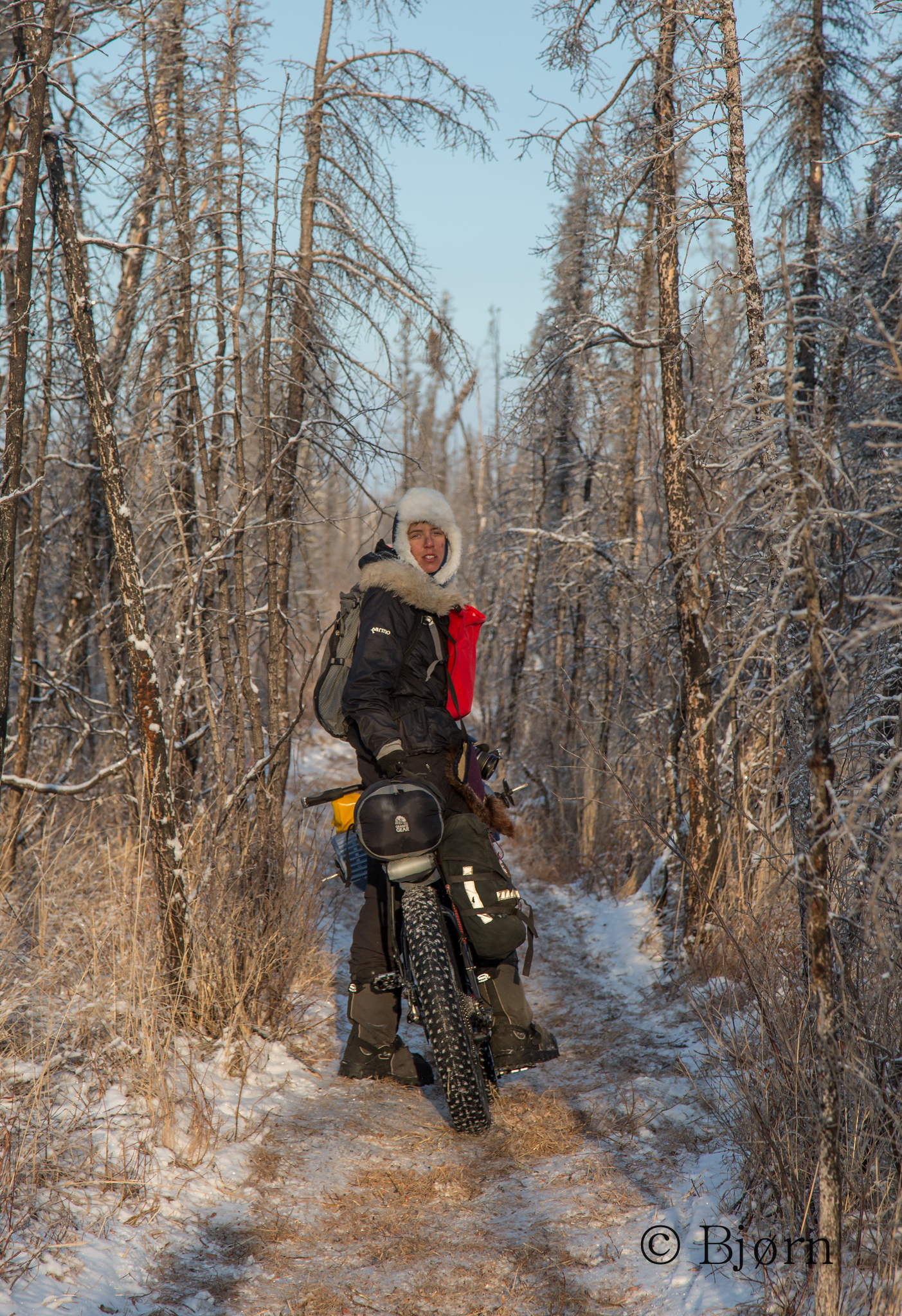
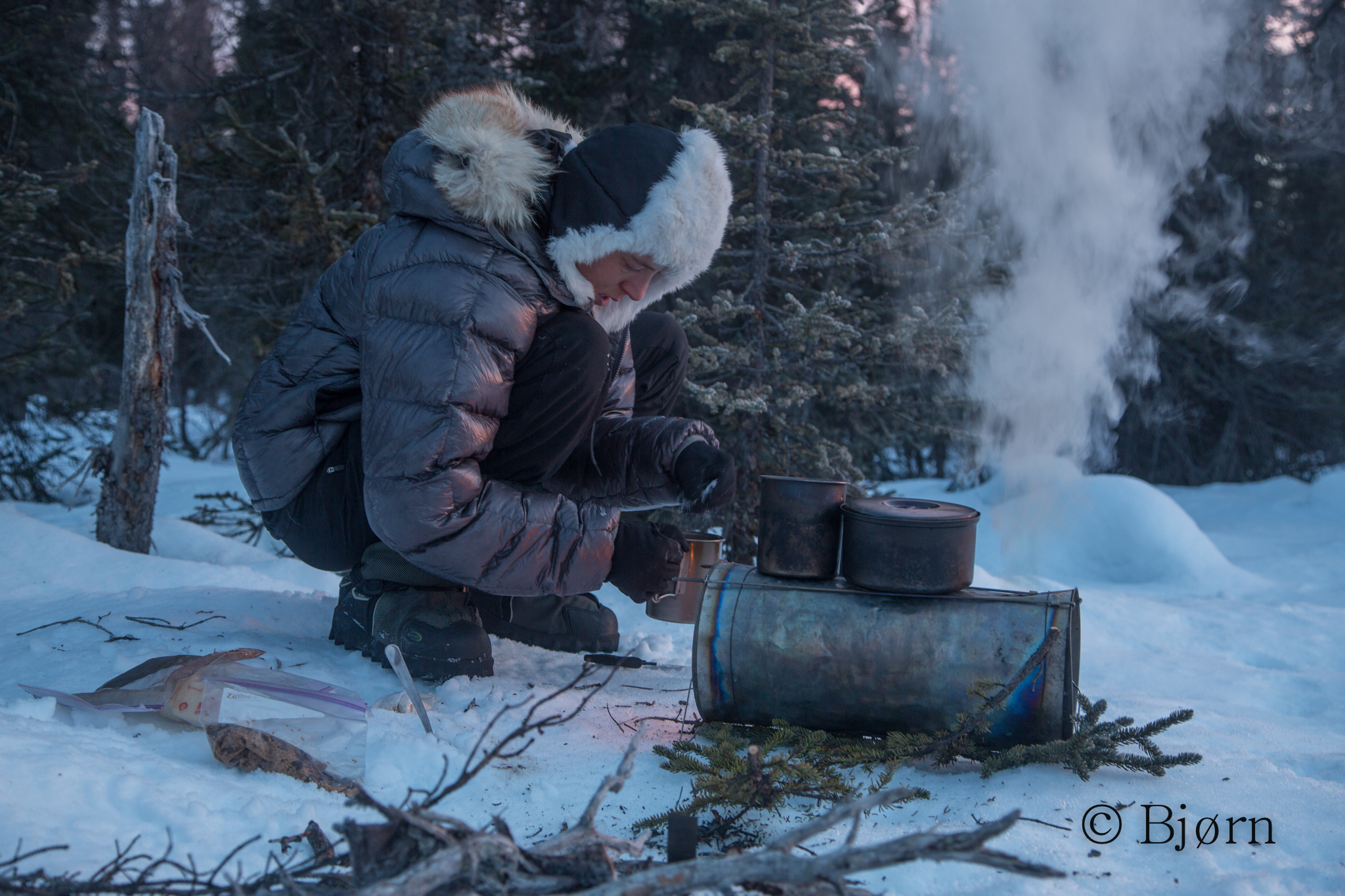
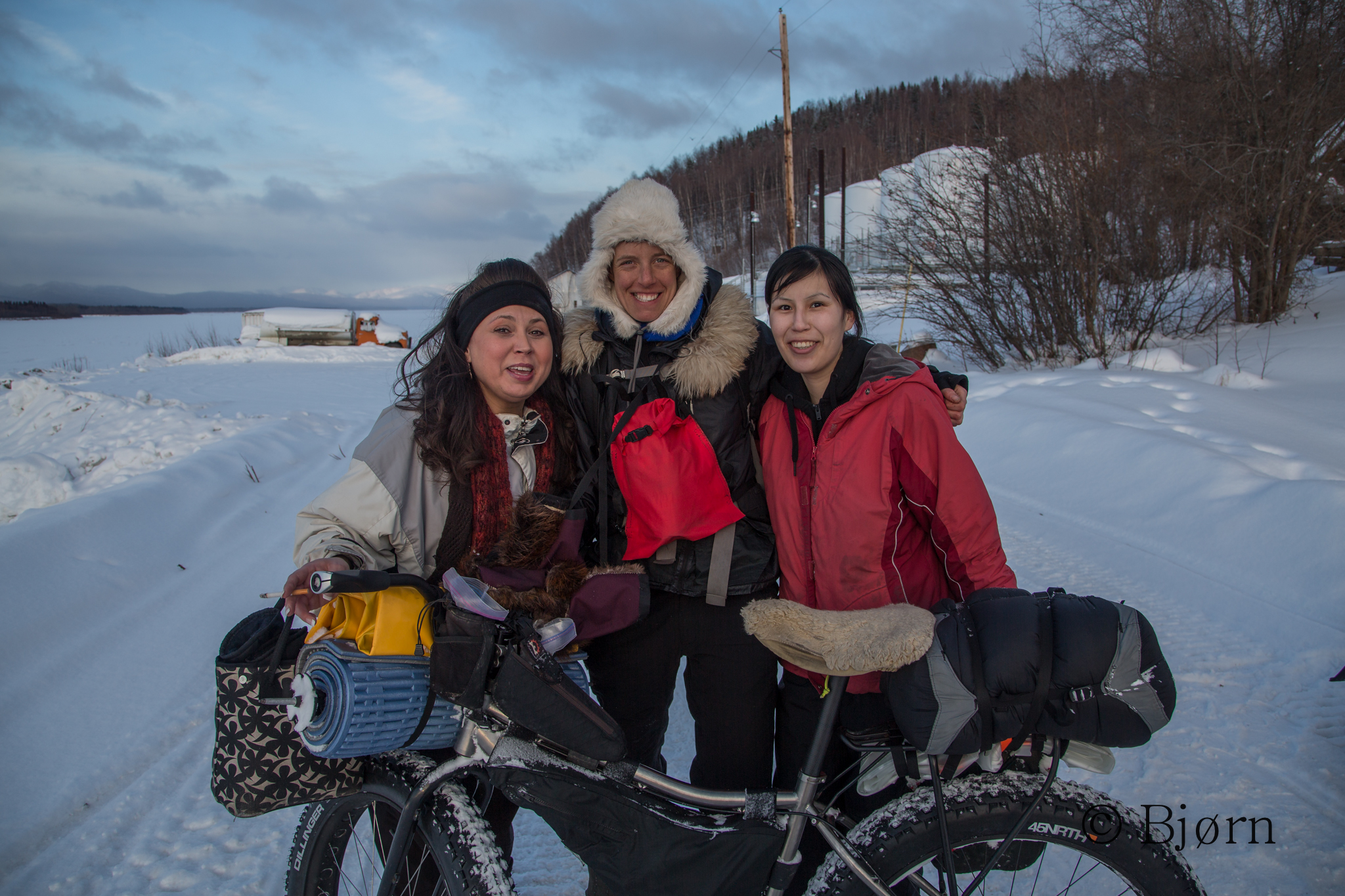
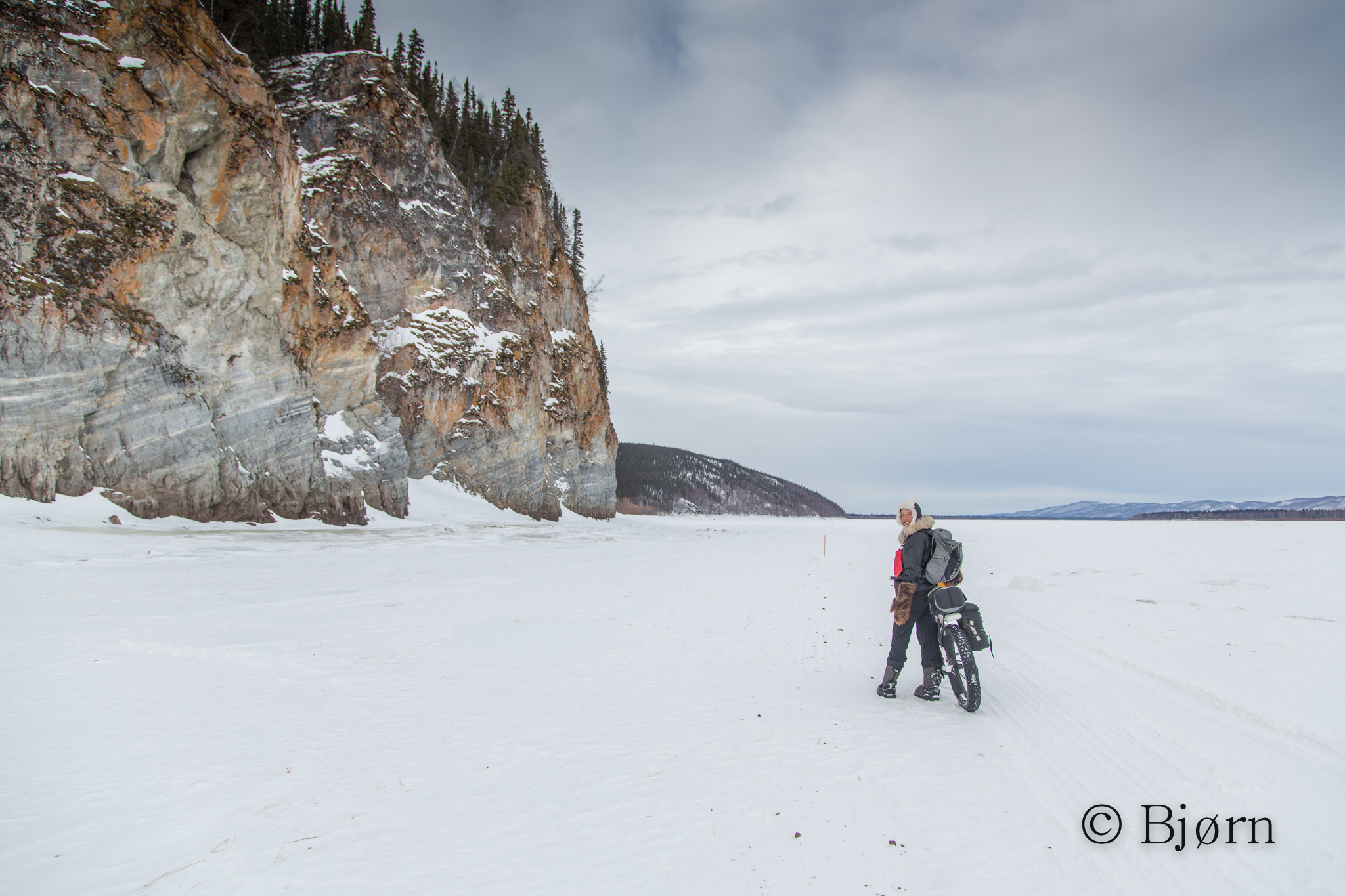
Crossing from the Kuskokwim drainage to the Yukon, through the Innoko, is some of the most remote and wild terrain I’ve ever been in. It seems to stretch on forever. We were very lucky in our traverse but it is easy to imagine, when you are out, that bad luck could be real bad luck. The snow off trail is sugary and bottomless. Without the path, progress would be nearly futile.
There was a feeling of jaws closing in on us on our way to Ruby. Each day presented a new challenge, from strong headwinds to new snow, the land was reclaiming its place and the temporary trail was being erased behind us. After Iditarod passes, that stretch of trail becomes lonely. We saw two snow machines going north and one south, in 4 days.
Overall all our equipment is doing fine and I can no longer imagine this kind of travel without the Titanium Goat wood stove. That said, we do have repairs and plan to spend a day here in Ruby.
When we pulled into town yesterday the village seemed abandoned. Finally we found someone and they informed us that everyone was at a potlatch at the school and invited us to come. The circumstances were less than happy, as the community had lost a loved one. We felt a little out of place but due to the incredible hospitality and generosity we were fed and made to feel comfortable. I have no words to describe how much I love Alaska and Alaskans.
Quyana for everything.
The Northern Lights Have Seen Queer Sights…
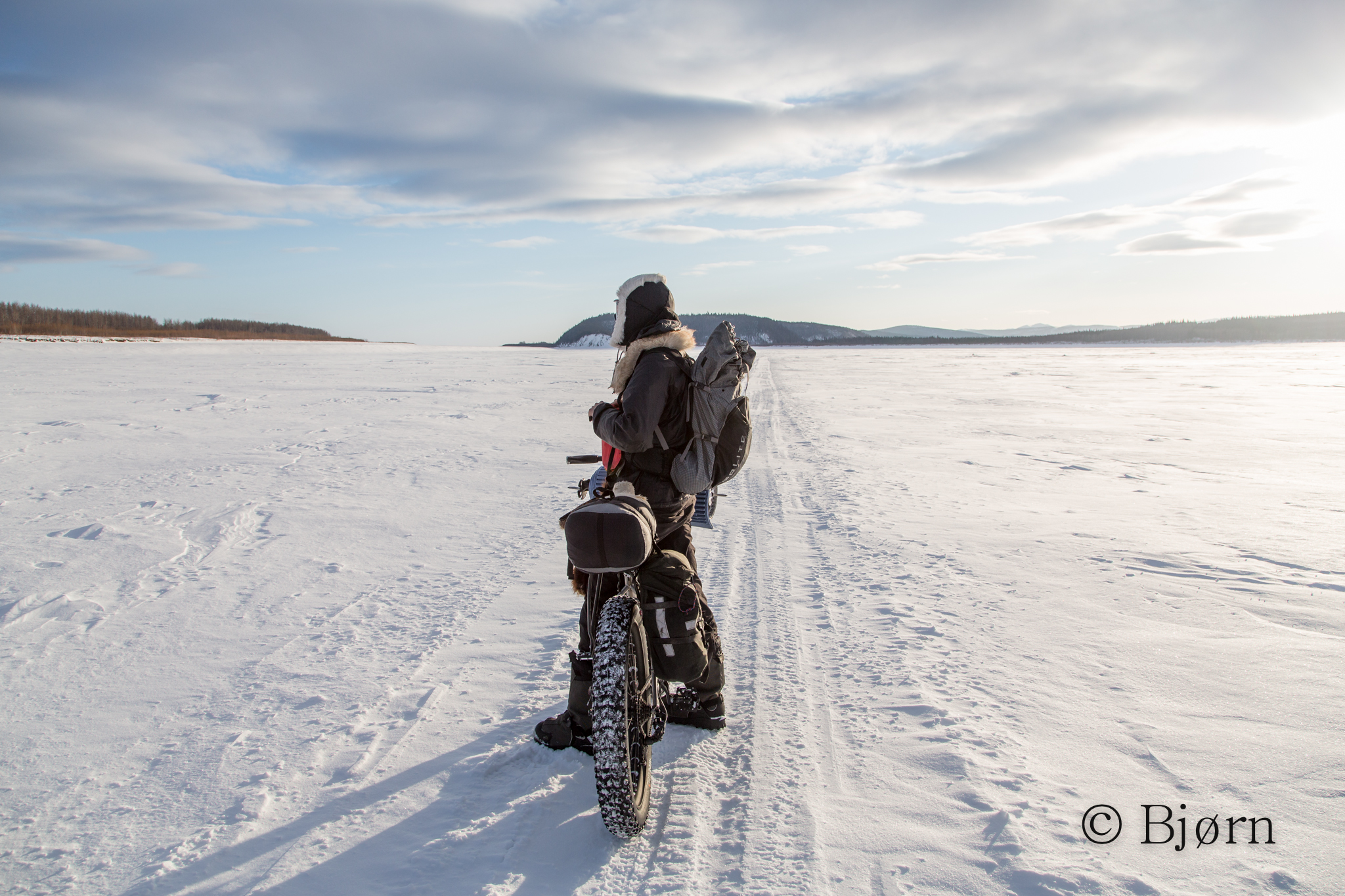
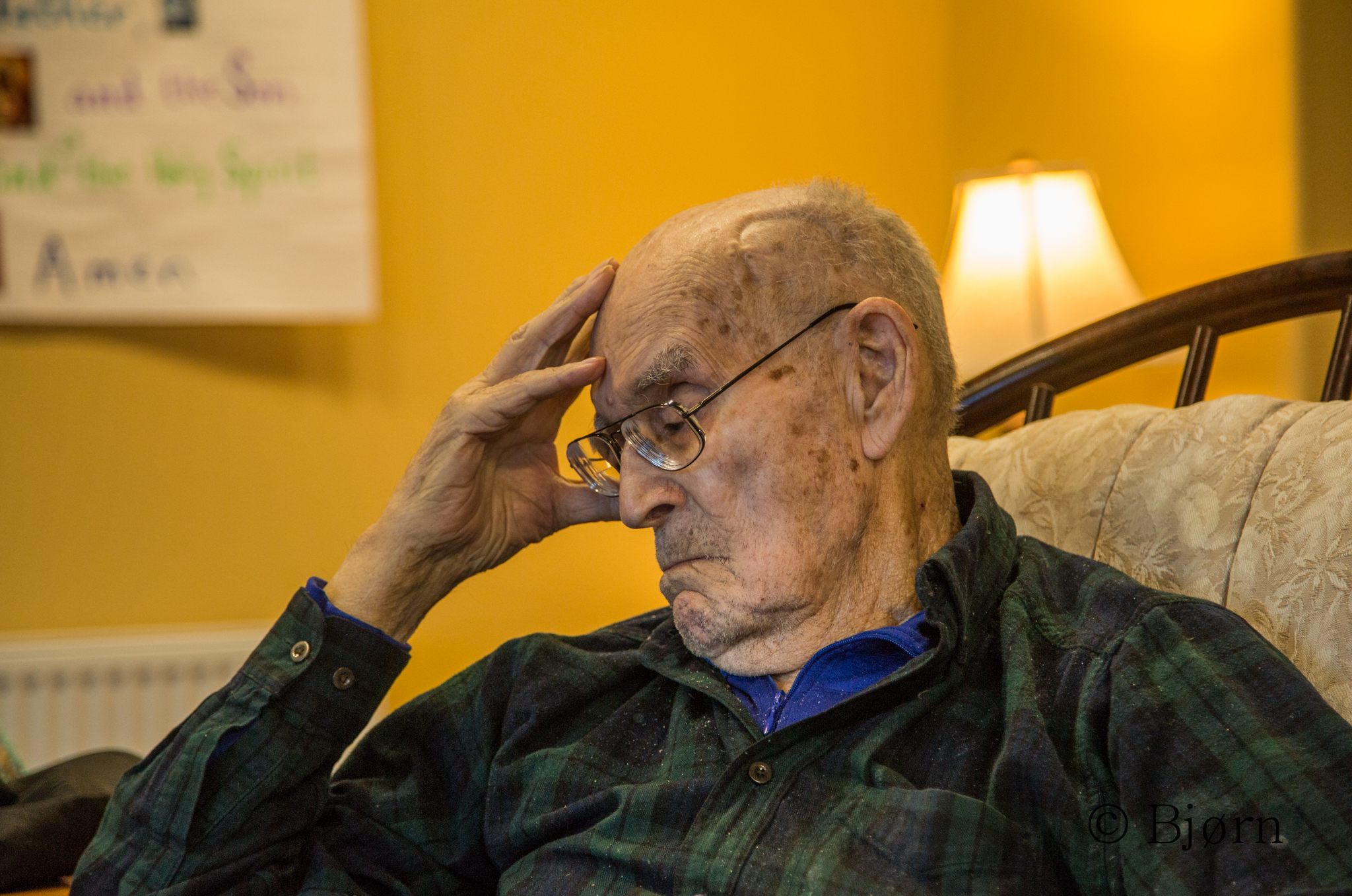
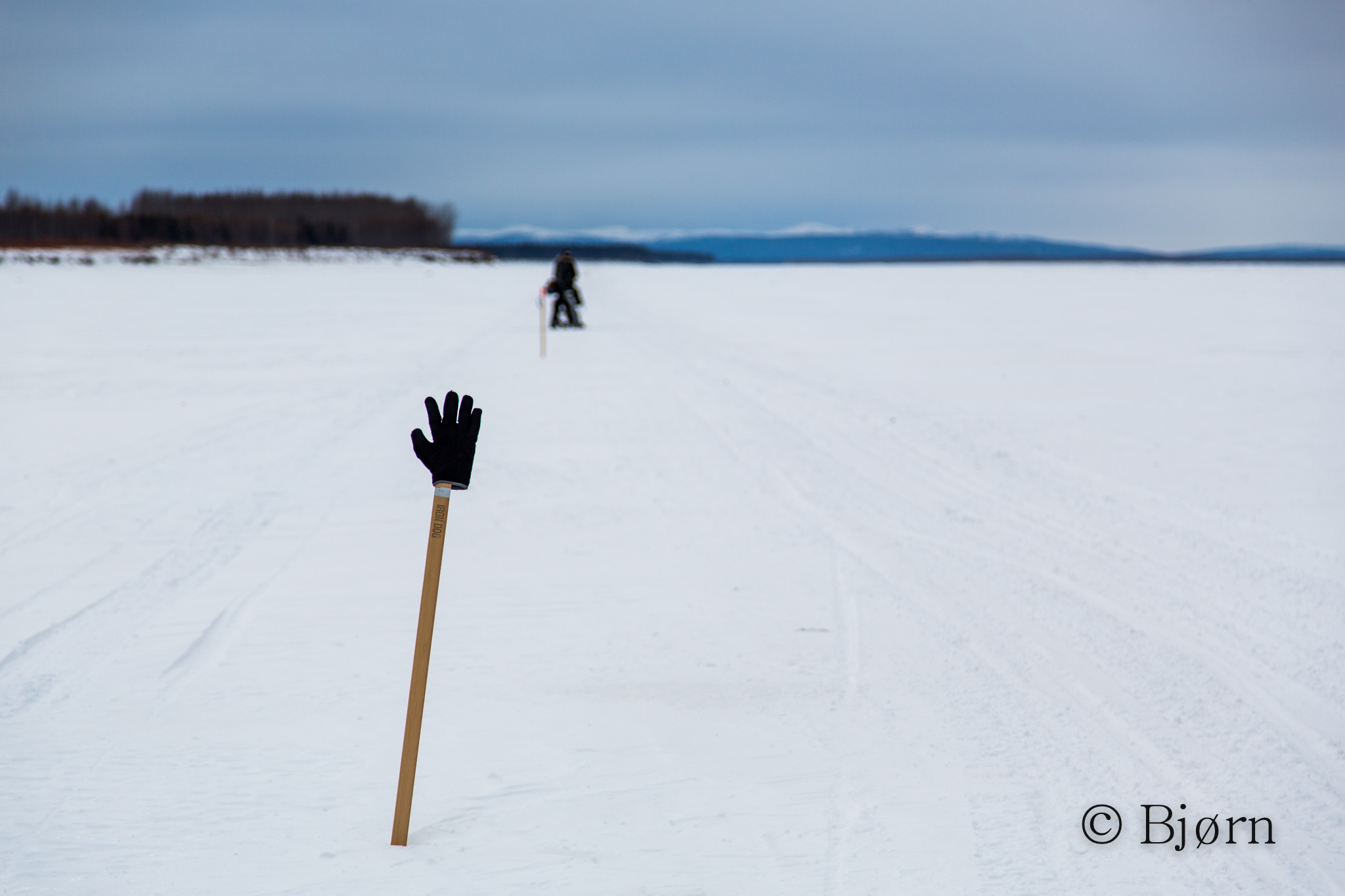
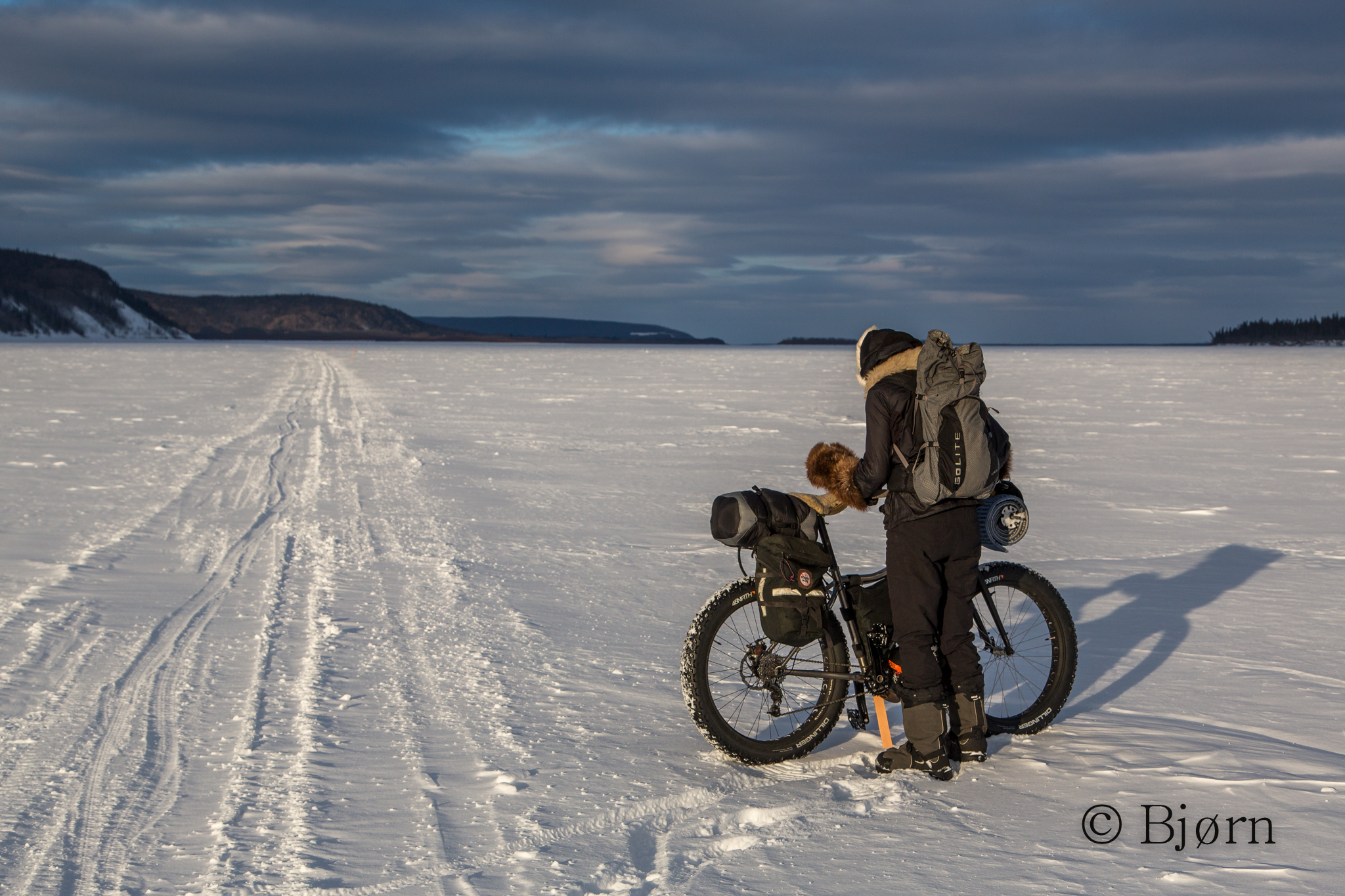
All through the Innoko, when the riding was tough, I thought, 'once we get to the Yukon, everything will be easier. It will be flat, well traveled and little streams of alcohol will come trickling down the rocks.' It was not to be.
The same storm also deposited snow on the river and even though there is much more traffic it never firmed up. Low tire pressure and low gear grinding was on the menu each day. We worked twice as hard for less than half the miles. But we can't complain, as we were almost always able to "ride".
I inquired before we left home, about an old friend who lives in Galena and was told that he was in Fairbanks. After an icky picnic of potato chips, processed cheese dip and candy, in front of the Galena store, I inquired again about my friend. He was indeed there, living in a boat after his home was destroyed in last springs break-up. We went and found him.
Many moons ago when I first knew Jake, he and two others were preparing to float the Yukon from Circle in a home made raft, replete with a greenhouse and chicken coop. They made it to Galena and Jake never left.
We spent the night catching up in his comfortable, if small, boat. His life on the river has been rich in experience. A "neolithic Athabascan" lifestyle suits his Russian personality and it's hard to imagine him living anywhere else, save Siberia.
Jake kept mentioning in passing a character named Sidney. Finally I interrupted him to ask, "You don't mean Sidney Huntington, do you?" Indeed, the same. Sidney Huntington is alive in Galena at the age of 99. Jake appreciated our excitement and arranged for us to meet him the following day.
Sidney is deaf, 99 and lives in the Galena Pioneer Home, but his mind is 100% there. We wrote questions on paper and he let out amazing tales of growing up on the Koyukuk and Yukon, politics, Pebble and the current state of the State. Everyone said he was in good form for meeting people. The conversation was followed by a meal of beaver that had been caught by one of his sons and cooked to perfection by one of his daughters.
For those who have read 'Shadows on the Koyukuk', you will no doubt understand my being starstruck. For those who have not, proceed to the closest book seller, buy a copy and read it. You will not regret reading of the tales and trials of this legendary Alaskan.
We are off the river and preparing for a new chapter - the portage. If all goes well, we will receive our package in the Kaltag PO tomorrow morning and be on the trail for the Norton Sound.
We have passed our three week mark and life at home feels long ago. Because of our amazing camp, we do not feel spent or exhausted. Even after a hard day, an evening around the warm stove with hot drinks, food and blissful sleep revives the soul and readies the body for a new day. Tomorrow will be another 'new day'.
Portage
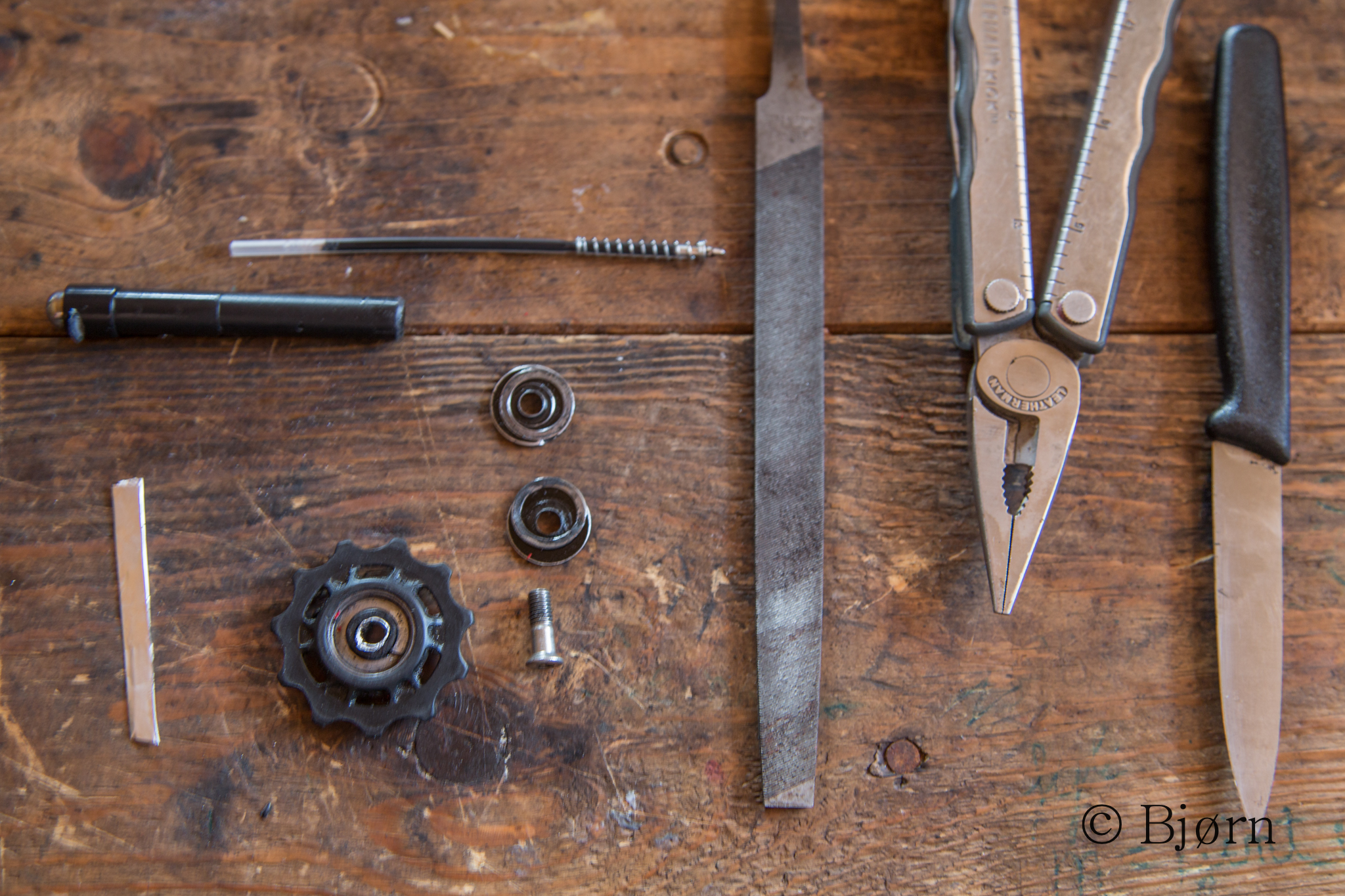
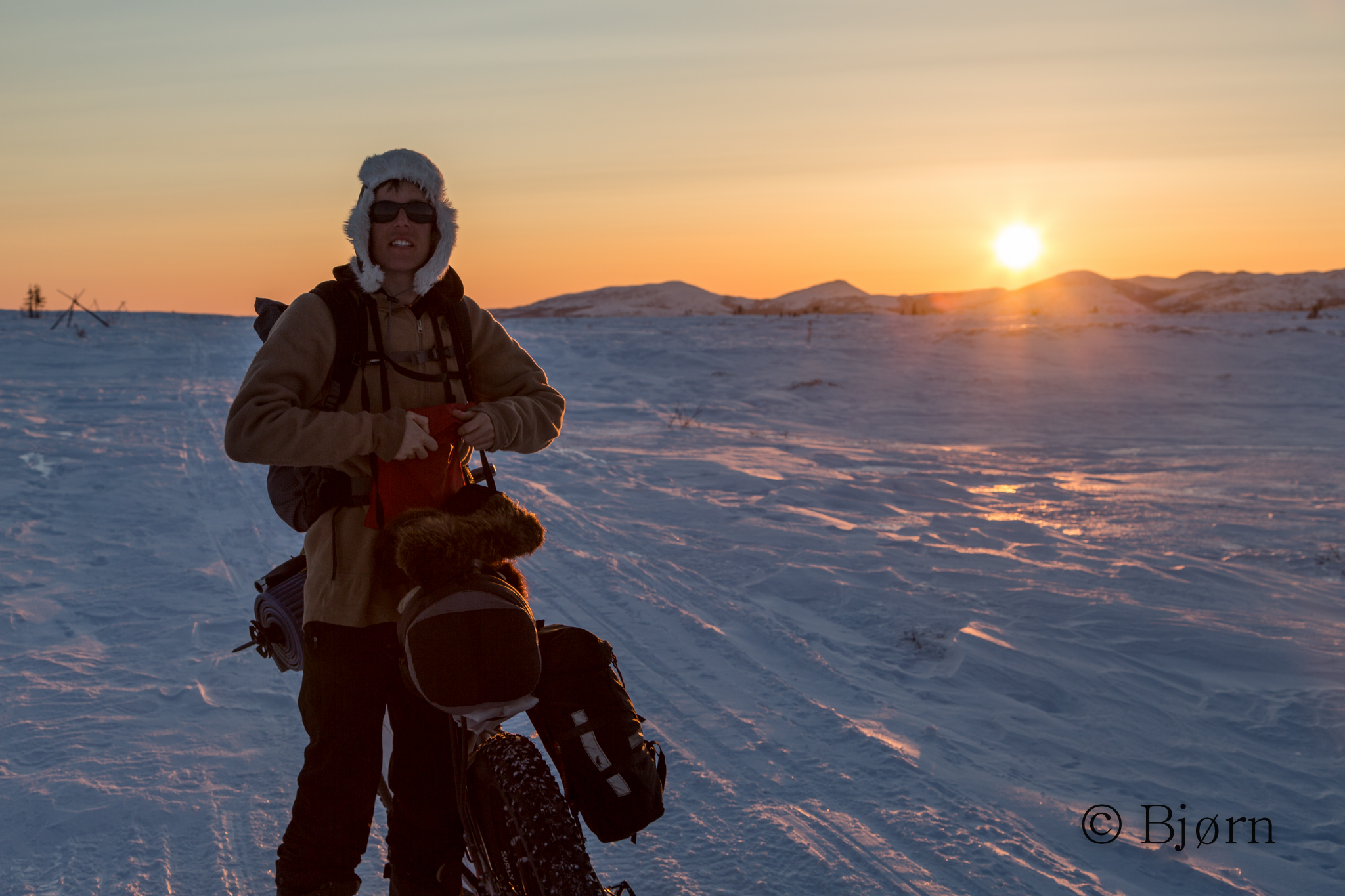
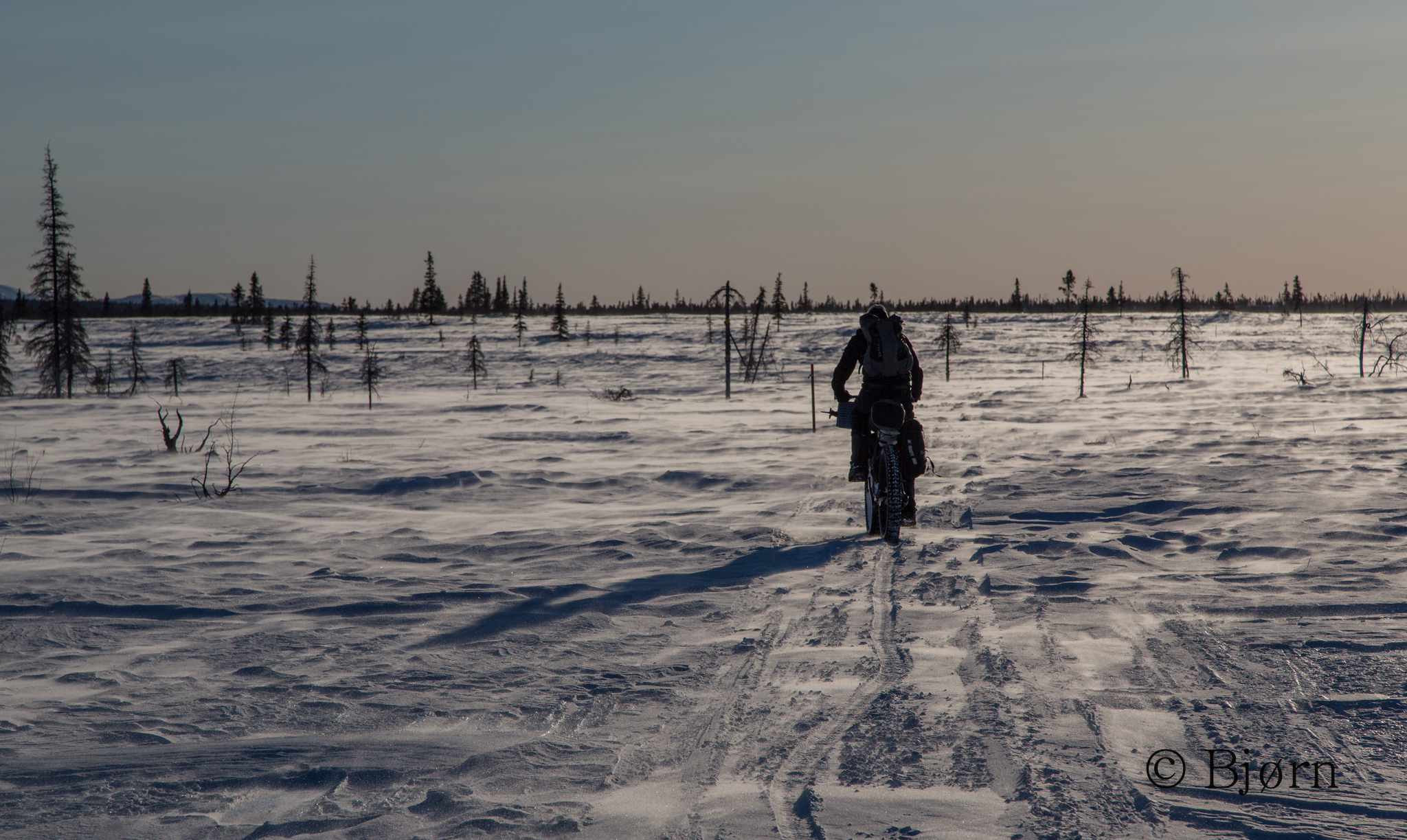
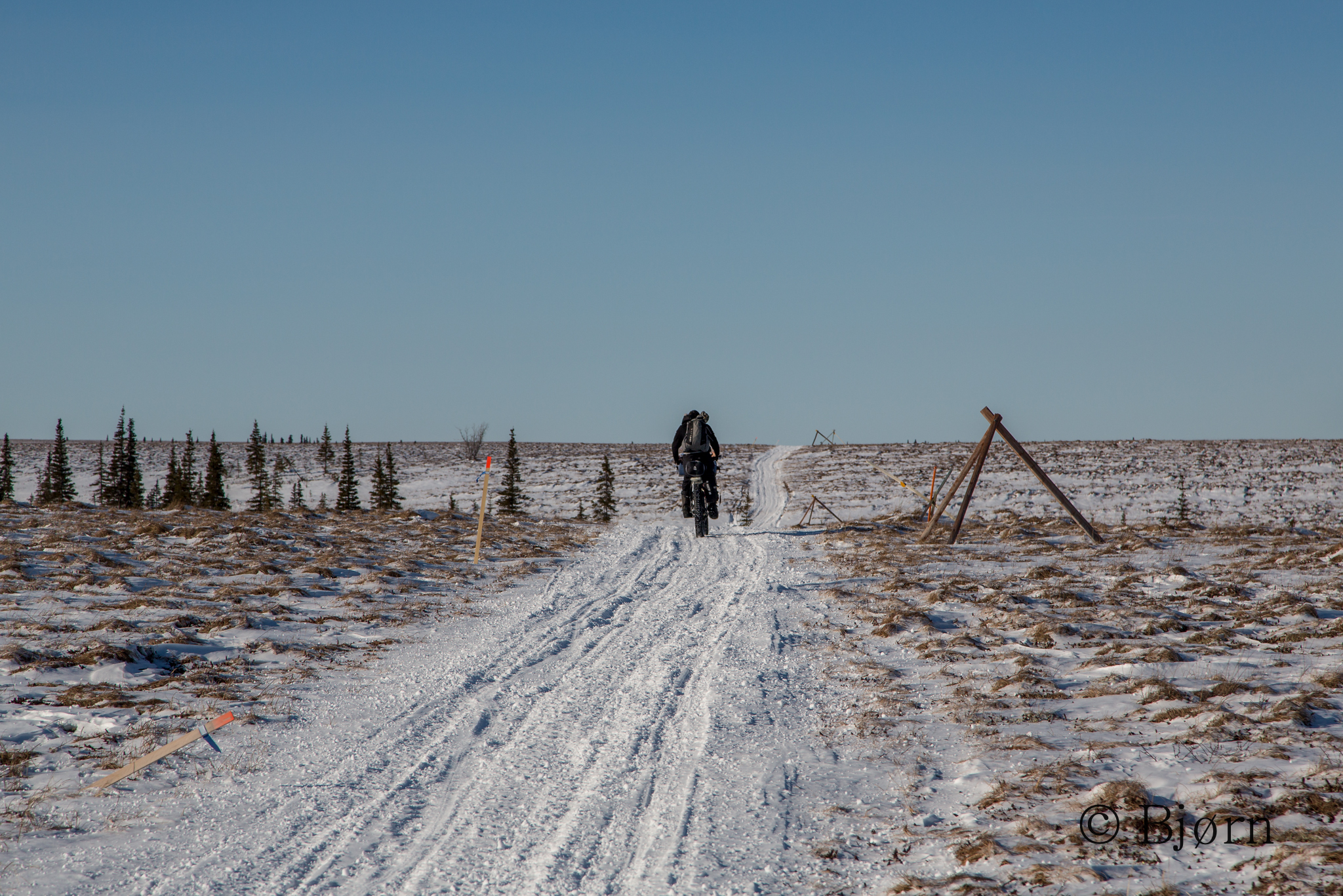
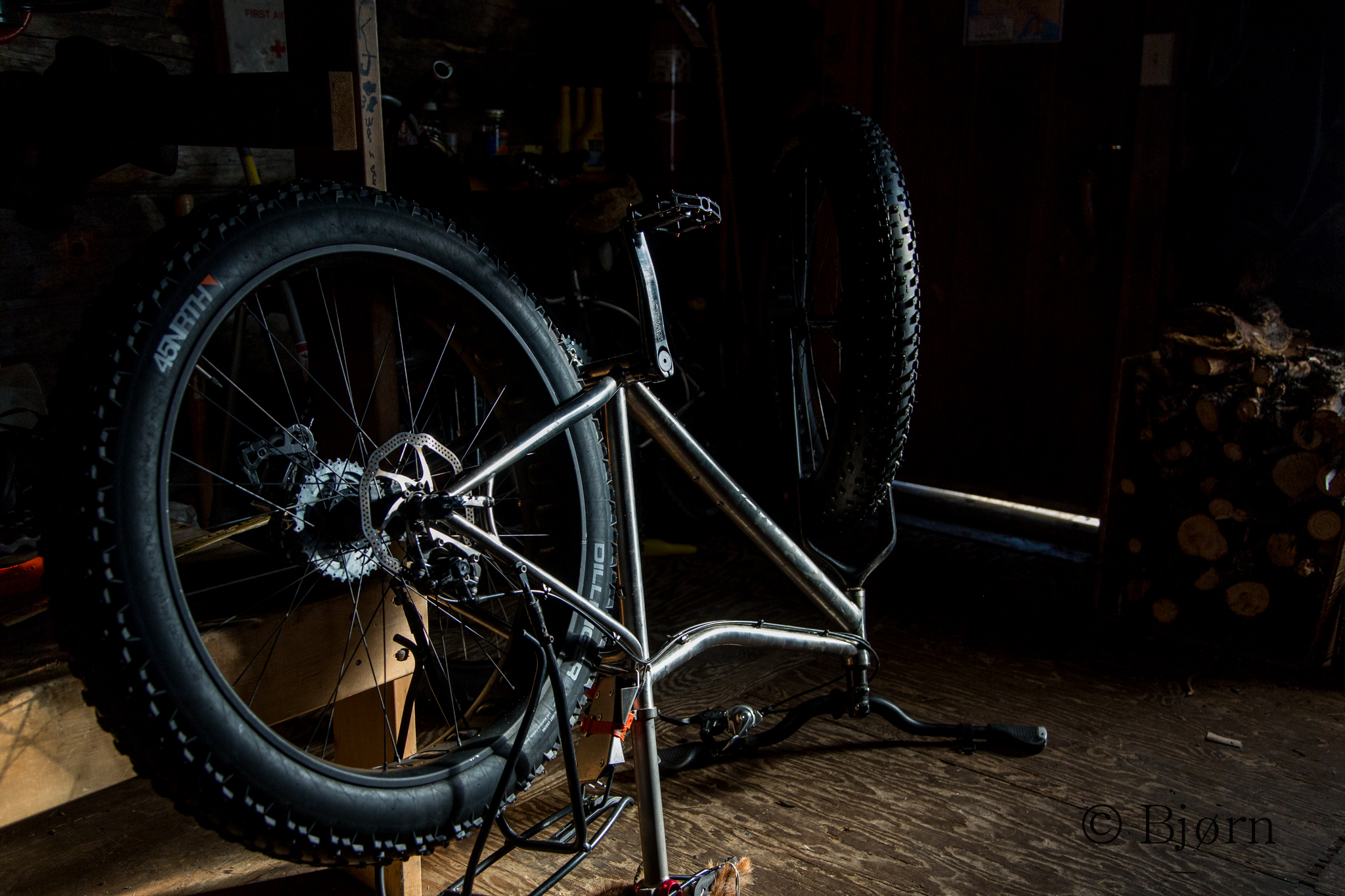
My friend Hig says, 'that adventure isn’t in what you plan for but rather what you didn’t plan for’. If this is true, our adventure has ramped up since Kaltag.
We pulled into Kaltag, off the Yukon, in the evening and were unable to retrieve our sixth of nine food drops from the Post Office so we met some locals and slept indoors. The next morning at 9AM I went to the PO, explained who I was and that I should have a box. The woman said there was no box for me there and that maybe it was with the rest of the Ultrasport boxes at the school. Umm, okay.
When I found the office woman at the school and explained myself, she immediately began apologizing and said she assumed “we” had all come through. Why is she apologizing, I wondered. When she opened the storeroom door I understood. Flat rate boxes were all over the place, opened and ransacked.
Most people who know me know me as a mild mannered, fun loving, down to earth person. People who know me well, also know that buried deep in my Viking genes lives an often-dormant Berserker. When the scales of moral outrage are tipped beyond a certain point the Berserker awakens and takes charge and I watch passively through my eyes as he takes care of business.
Normally, I would never raise my voice to an educator of children. They are our nations most prized possessions. We should erect statues in their honor, and should value them above military generals, pop stars and politicians, but this was wrong. The Berserker had a conversation with the teacher. “I’ll never let this happen again.” she said, as I stormed out of the building. “Good” I said, ‘It had better not.”
Once we supplemented our missing food at the local store we hit the trail for Unalakleet, over the Kaltag Portage. We were on, for the first time in weeks, a firm trail and a brisk east wind was at our back.
Weeks ago, while pushing hard on the pedals in soft snow, I heard a pop sound come from my drive train and felt my cranks spin without resistance. I didn’t need to look to know that I had snapped my chain. Although the chain was only a week out of the box before we left, I was not too surprised. This kind of riding is hard on chains. However when I went to replace the pin in the spliced chain, I was alarmed at how easy it slid in. It felt like I could have pushed it back in with my fingers, rather than the mechanical puller.
Breaking links in this chain has become an almost daily occurrence since then, sometimes more than once a day. I have lost so many links that in the final push into Unalakleet I had two options for gear shifting. This chain, mind you, is advertised as being perfect for all weather, year round conditions. Pure marketing. It is junk. I blame myself for not being more critical at home, when I had the chance. However, when I have to take my gloves off in 0º weather with 20 mph winds, my blame and wrath are on the manufacturer. We have been building chains since before the industrial revolution. Hasn’t this technology and engineering been resolved long ago?
On the Kaltag portage there are two BLM shelter cabins. Just before reaching the first one my chain broke again. This time while repairing it, I looked down at my derailer and noticed that the bearings of one of my pulleys was blown out. It’s the little things that’ll get you. I pushed the bike to the cabin and hoped that I could find some solution to the problem.
Inside, I found a small flat file and a washer. After three hours of filing, I had rounded the washer to fit into the bearing race and then cobbled together, with a ballpoint pen and tin foil, an inner sleeve. Surprisingly, it worked.
It is near impossible to be frustrated or angry long, on the portage, in perfect March weather. This is an ancient path, separating two cultures, the interior Athabascan and coastal Inupiak. We felt Susan Butcher looking down on us from her perch atop Old Woman Mountain and imagined all the adventurers who have passed through this corridor.
We have been having the kind of March days that I spend the other 11-month dreaming about. Our friend Derek has sent me a new chain and pulley, we have received our 7th drop and we are now on the coast. There are very favorable trail reports north of Koyuk, as the caribou are there and the hunters have been out.
The adventure continues. I only hope it be the kind we planned for and not the kind we didn’t.
Sea Ice

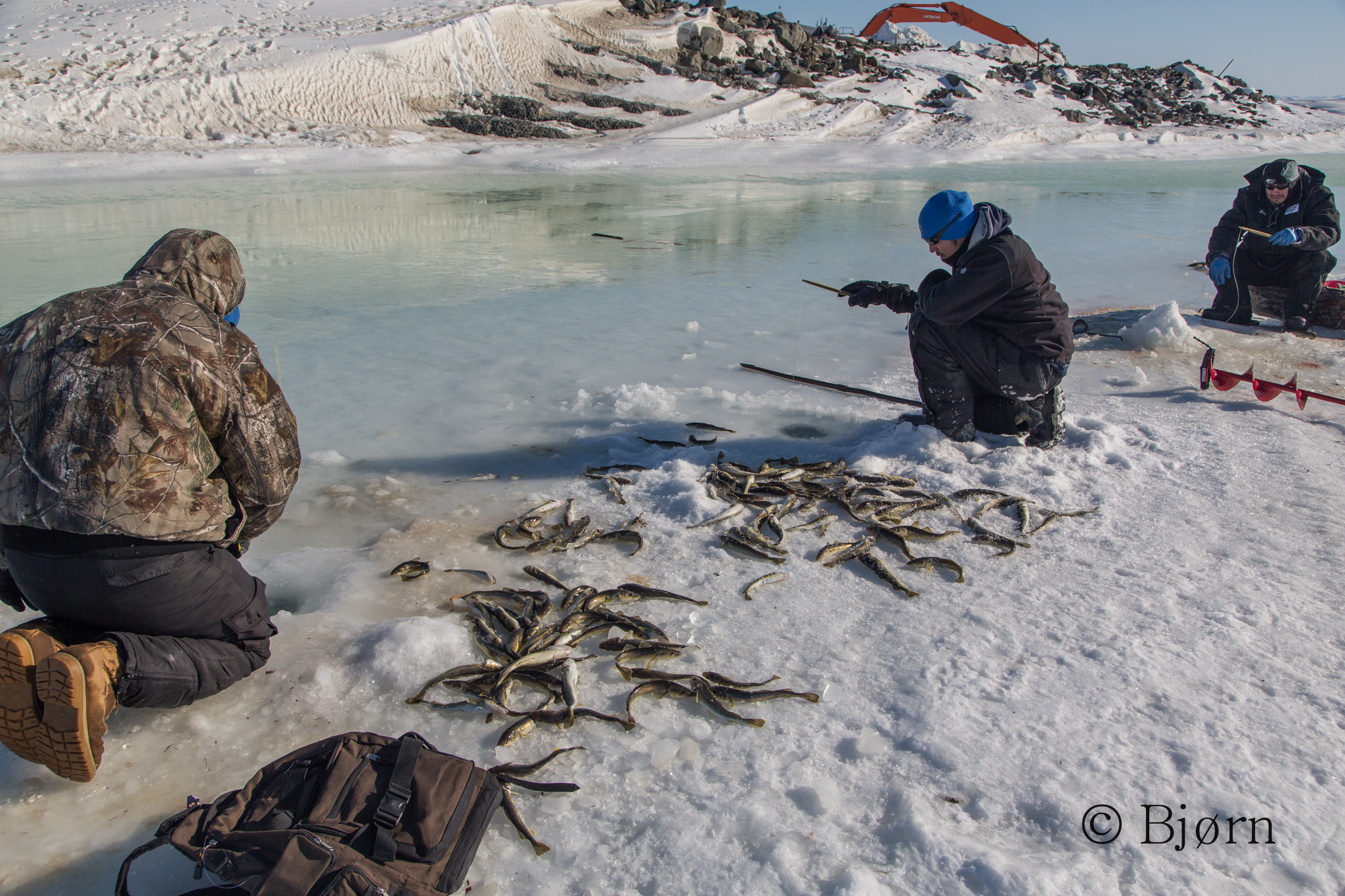
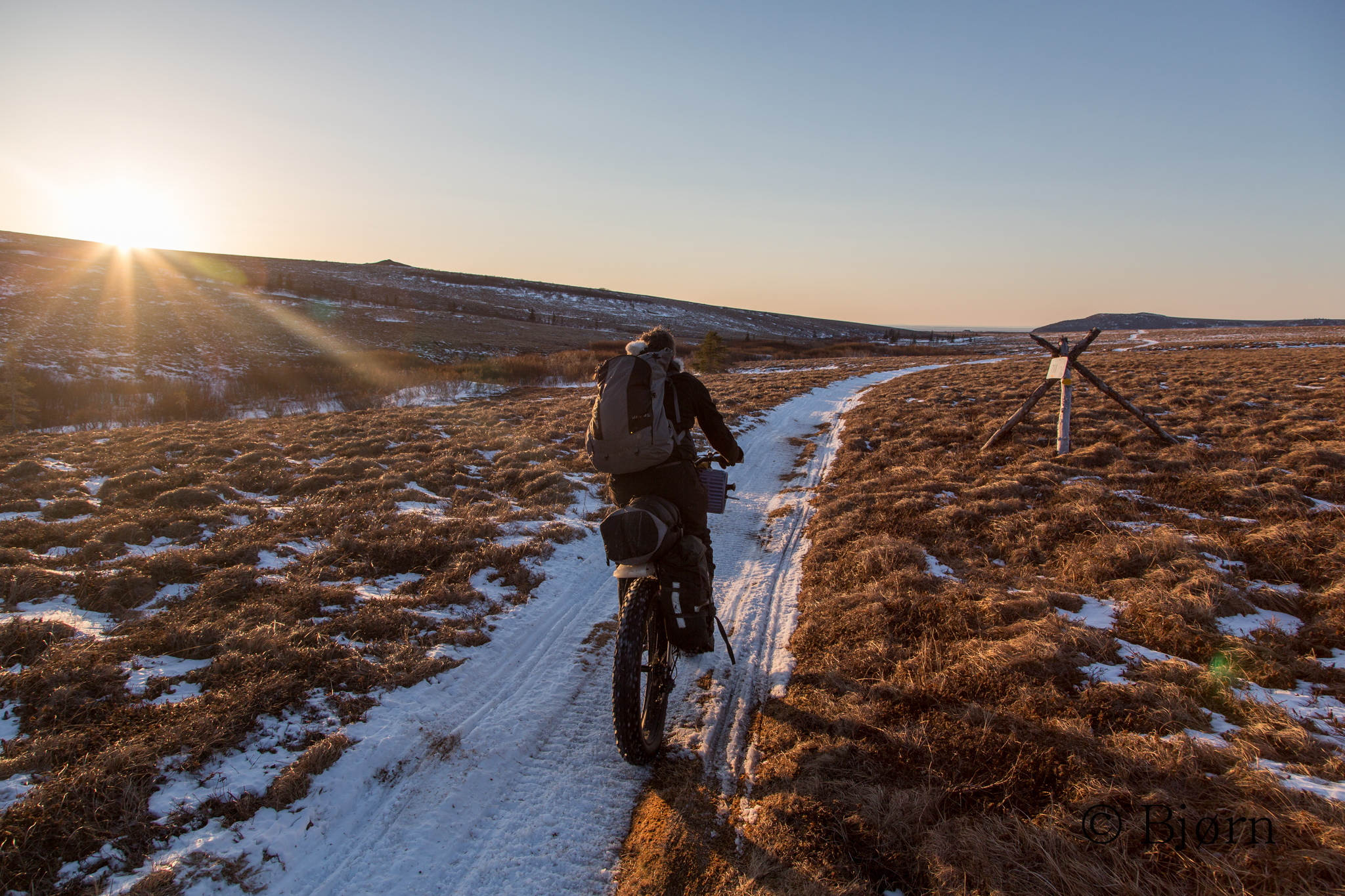
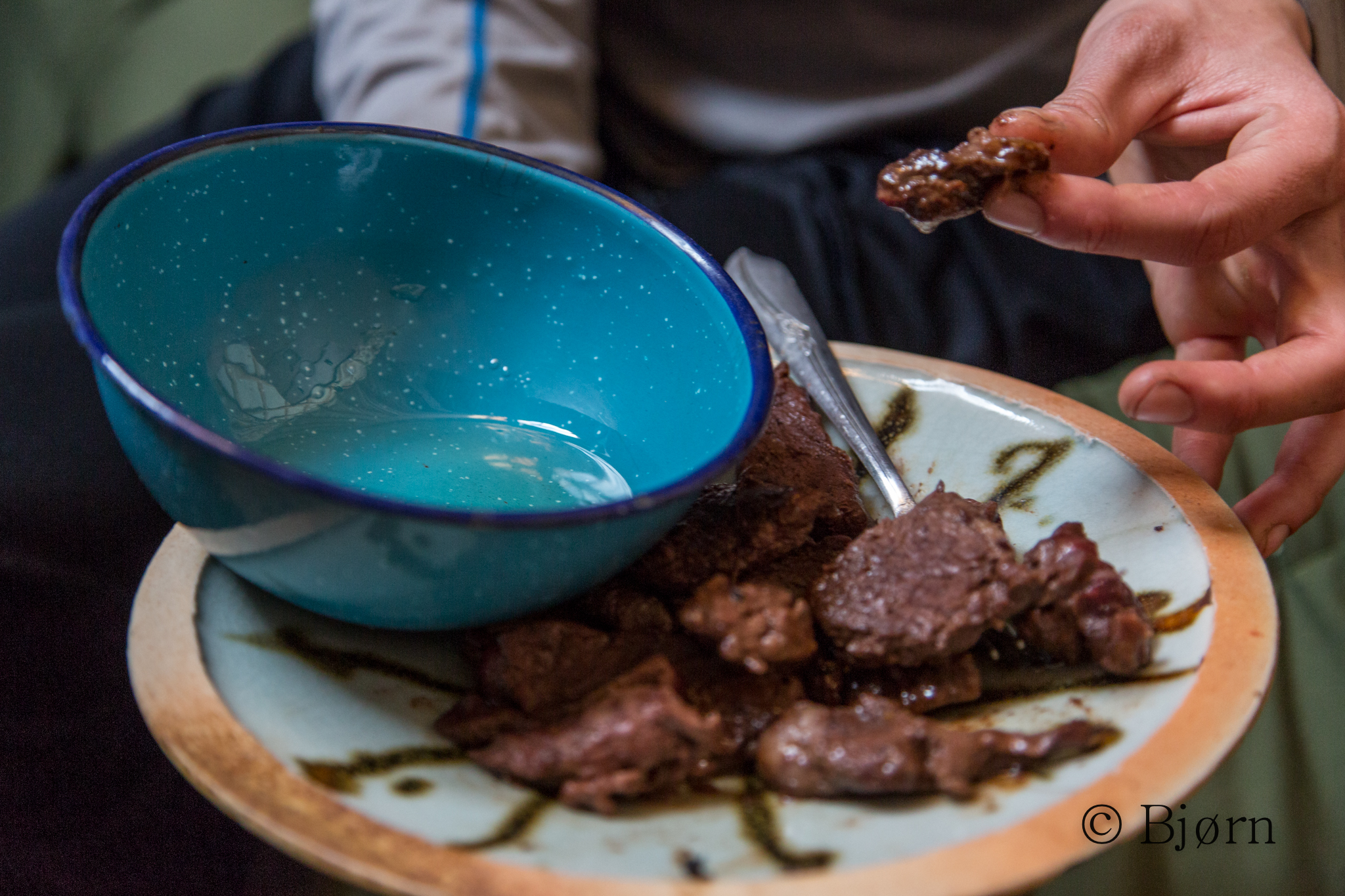
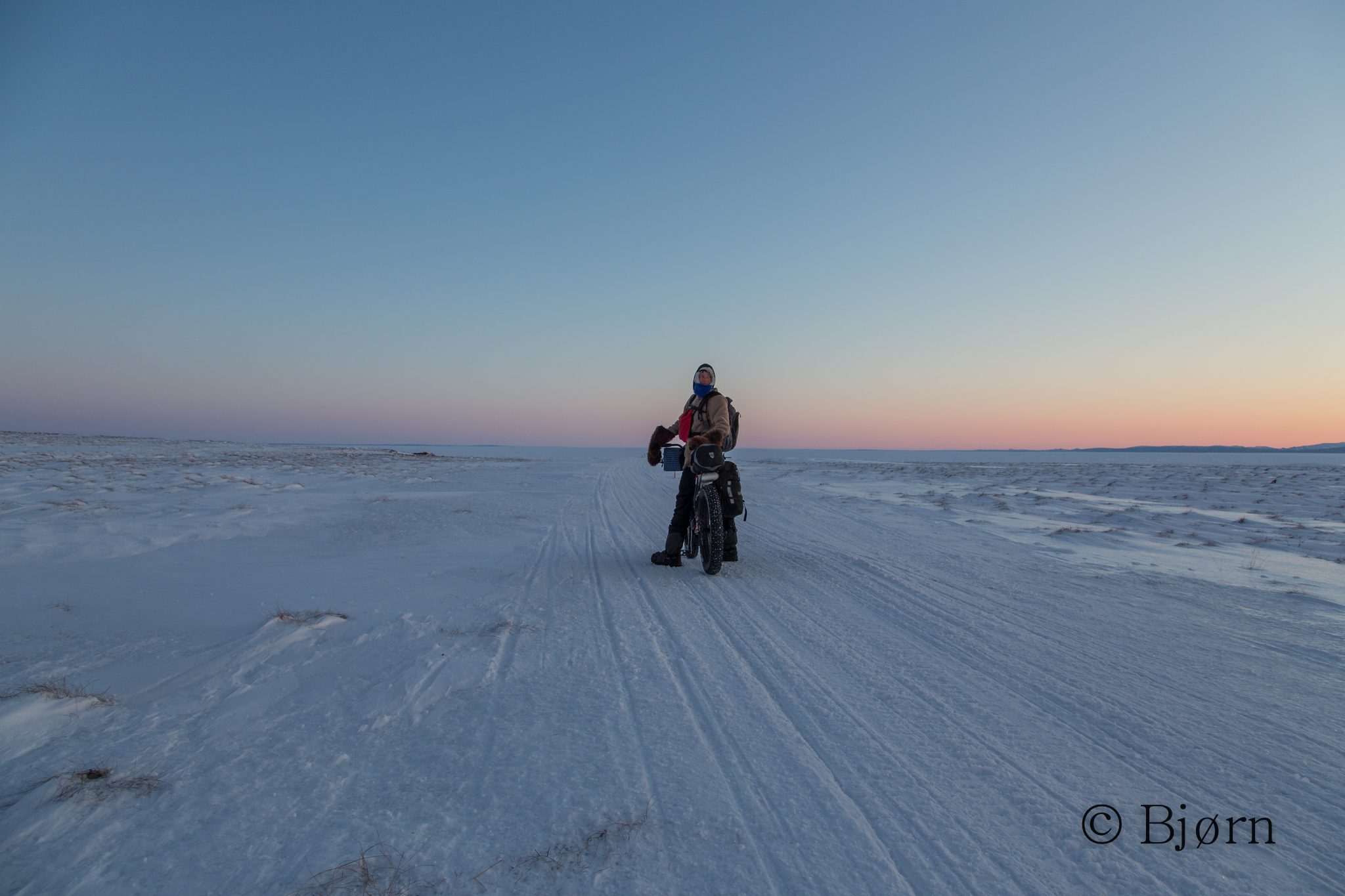
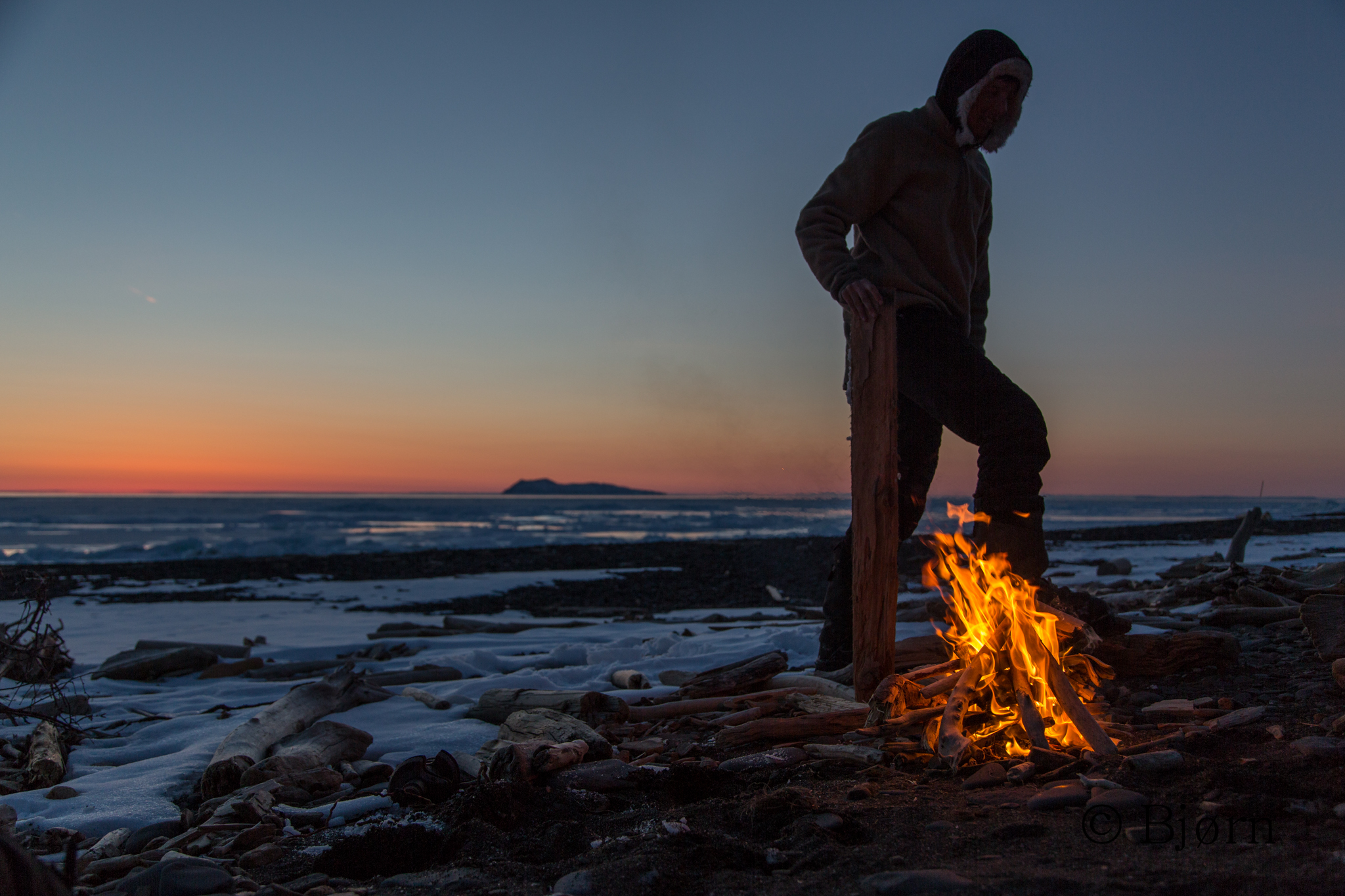
My favorite memory, of riding a bike, was from 1998 when I rode from Nome to Unalakleet. The day I left Koyuk, there was a 30mph north wind at my back and the trail across the sea ice was rock hard. As I rode, fata morgana (mirage) played tricks on my eyes and the Reindeer Mountains stretched vertically into wild and unearthly contortions. I made it to the shelter cabin in a blissfully quick, couple hours.
As we drew nearer to the coast on this trip, I began to quietly fret about that 30mph wind. As Dick Griffith says, 'the wind is always blowing from the direction you're going.'
Our passage on Norton Sound has been without incident or undue suffering. The trail has again firmed up, the winds have been very light and the sun has shone strong. Happy hunters stop on there way to, or returning from the caribou and continue to give us favorable reports from our trail north. This is a good time of year, maybe the best.
As we pulled into Koyuk, Kim stopped to draw attention to the fact that we will be leaving the now very familiar Iditarod and Irondog trail markers. We see these orange and blue markers in our sleep and must have passed many thousand of them at this point. From here we diverge and take a new trail to the north - to the arctic circle. Very exciting.
We have met many amazing people on our trip so far but it is always refreshing to see an old friend. Robin Child has been teaching for the last two years here in Koyuk and greeted us as we pulled in. We slept in her yurt last night, had a dinner of fresh caribou and seal oil and stayed up way past our bedtime, telling stories.
I feel lucky to know so many amazing women. Women who are unbridled from the structure and confines of "traditional" womanhood and who make the life they wish to live. Rural Alaska seems to have an abundance of empowered women who are not afraid to chop wood, haul water, build boats, shoot guns, etc. and be both educators and students to the place they make there home in. Robin is one of these women.
Again I/we are waiting for the mail plane. The remaining part for my bike has been on almost as wild a trip as we have been. Sent to Unalakleet, forwarded to Koyuk, missent to Shaktoolik, returned to Unalakleet and finally re-forwarded to Koyuk. Hope it makes it.
One more food drop remains and if all goes well, the next post will be from above the Arctic Circle.
Seward Peninsula
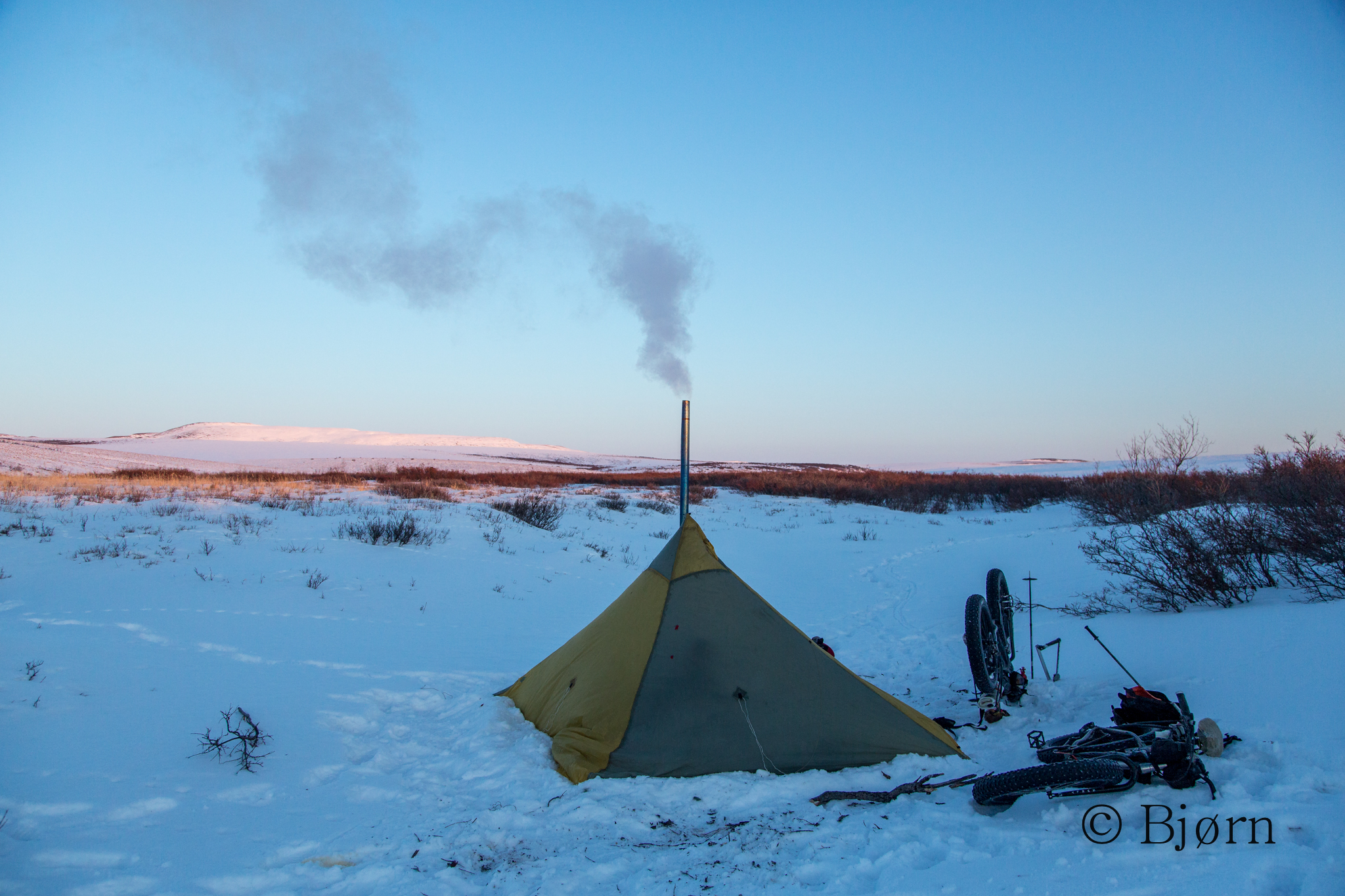

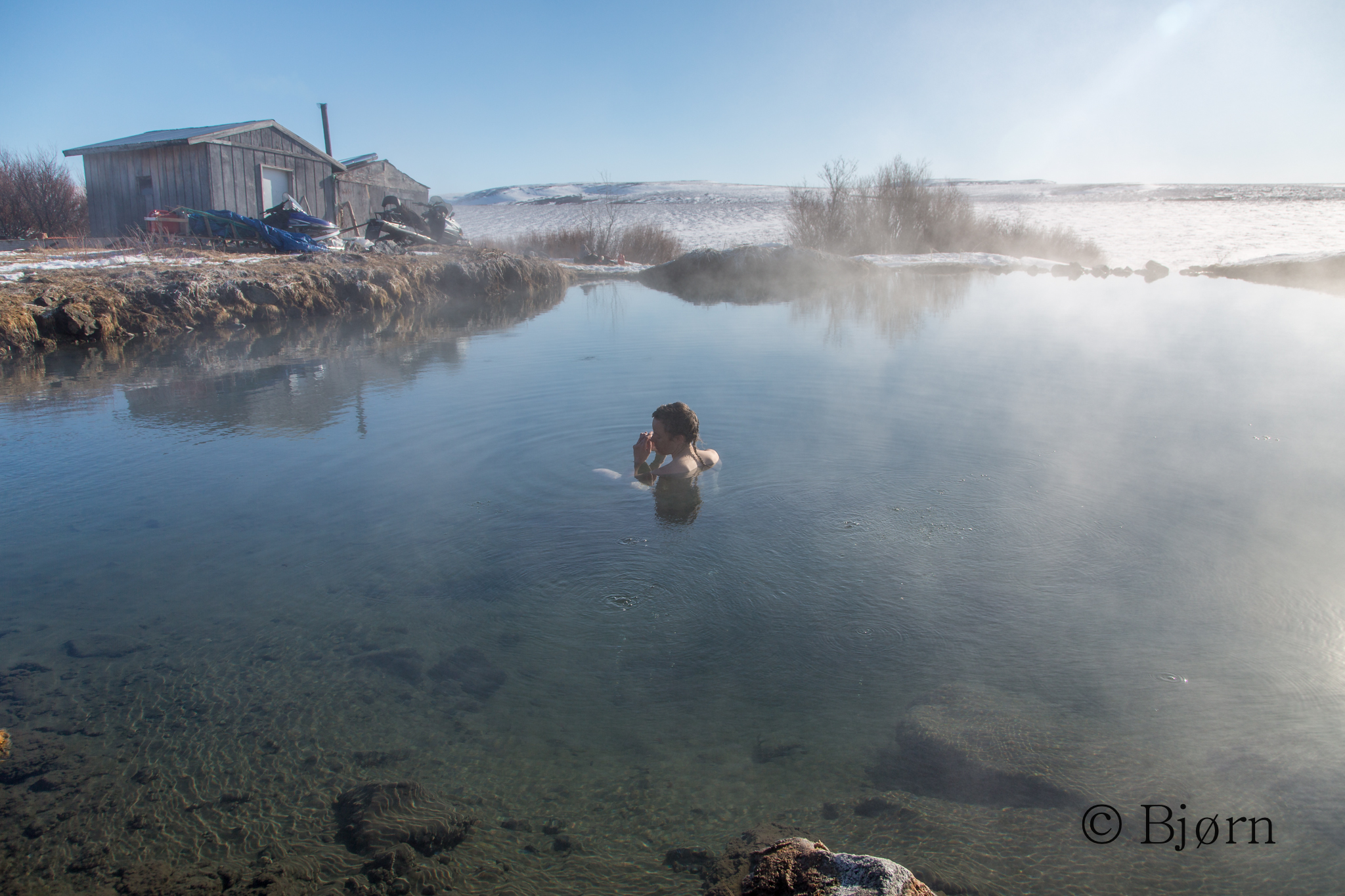
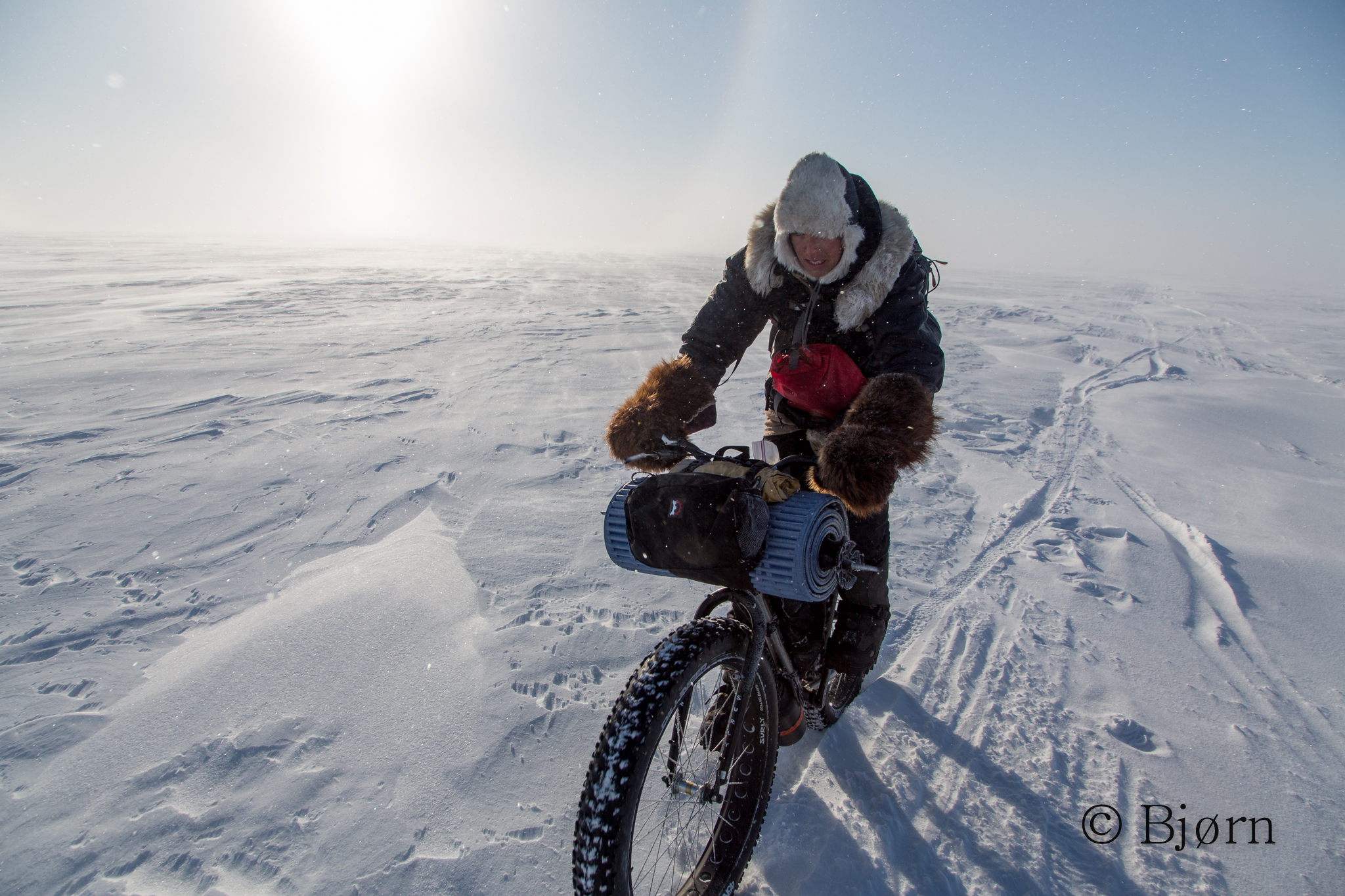
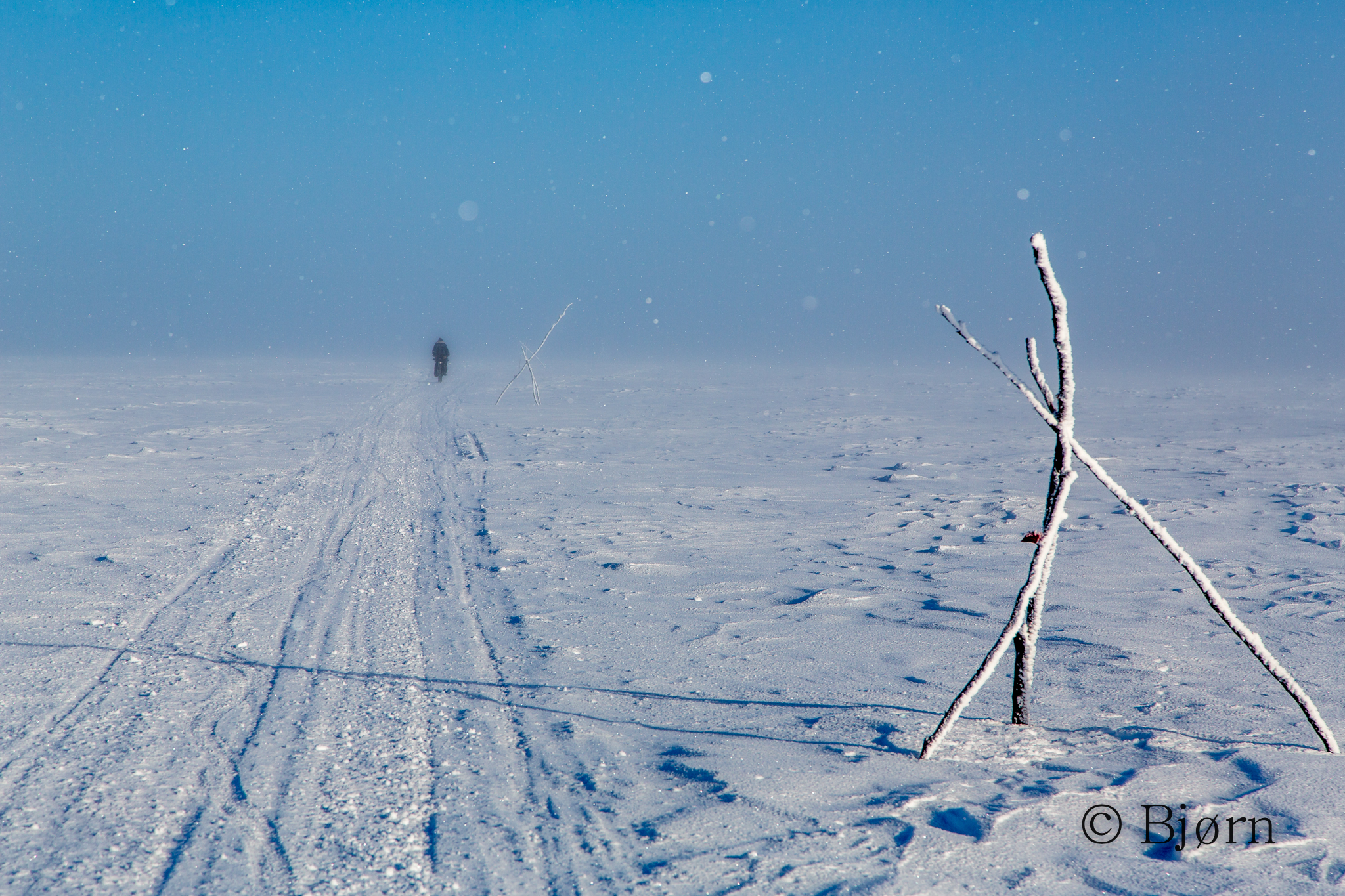
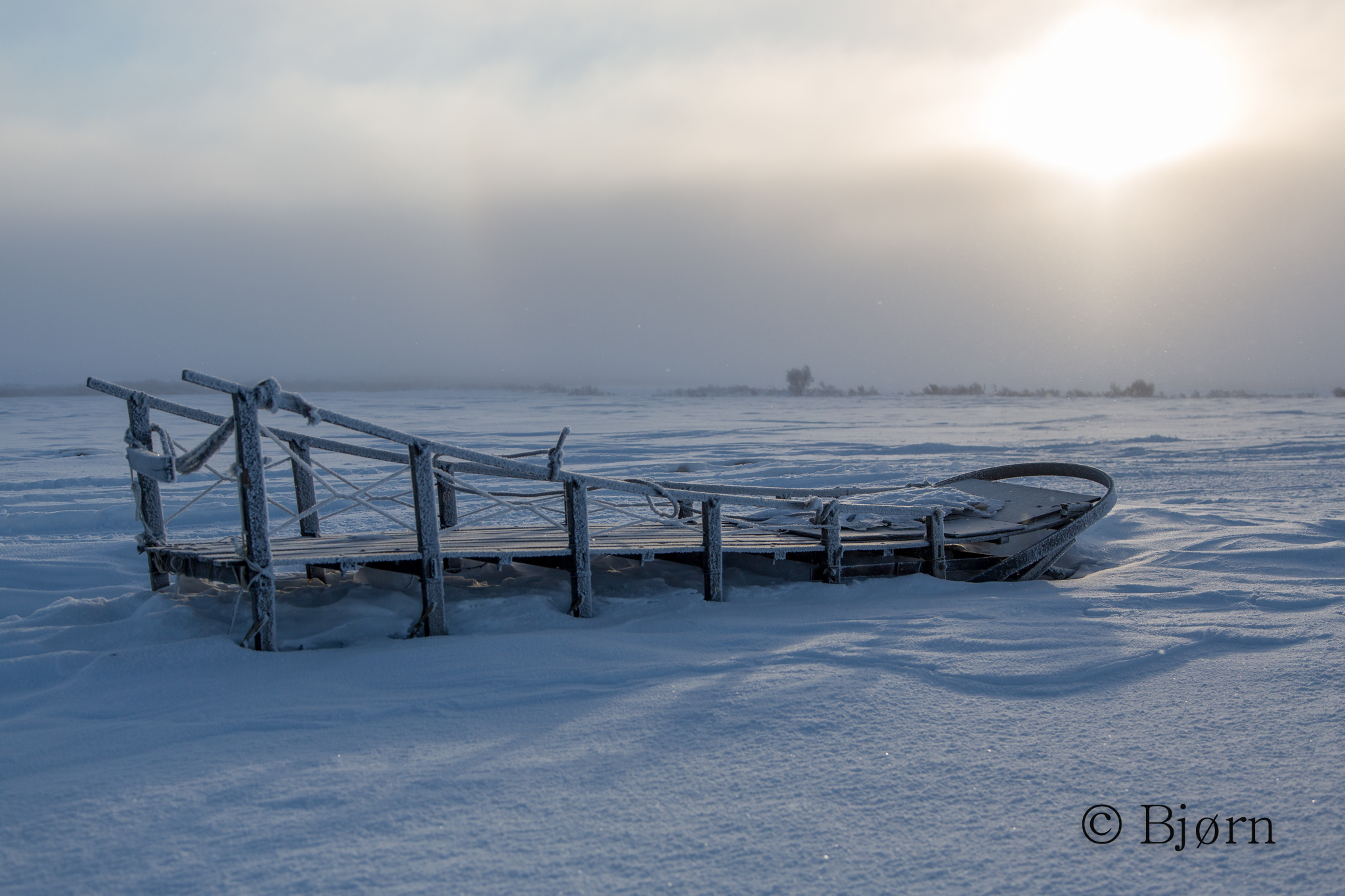
We've made it to Buckland, over the Seward Peninsula. This will be our last food drop before the circle and Kotzebue. Spent a few hours soaking in Granite Hotsprings and had my derailer pulley hand delivered by our friend Robin.
This morning we left Bear Creek shelter cabin early, in the most incredible ice fog. This landscape is so vast and devoid of forest and the fog added to the deep mystery of our surroundings. It broke by early afternoon and we rode an amazing trail into the village, where once again, as luck would have it, there was a potlatch going on, at the school.
This time it was a celebration of life and even though we stuck out like sore thumbs, it was less awkward and our presence was an accent to the theme. “Where you come from?” “Why you doing this?” “Are you scared?” With a mouthful of food, we try our best to answer these questions and start in with our own.
We have been eating well the whole trip but it seems to just get better the further north we get: white and black muktuk, caribou steak, caribou burger, foul soup, moose sausage, seal oil, akutaq, and lots of dry fish.
We're spending the night in the school and hope that the PO still has our box in the morning so we can hit the trail for the home stretch.
April Fools
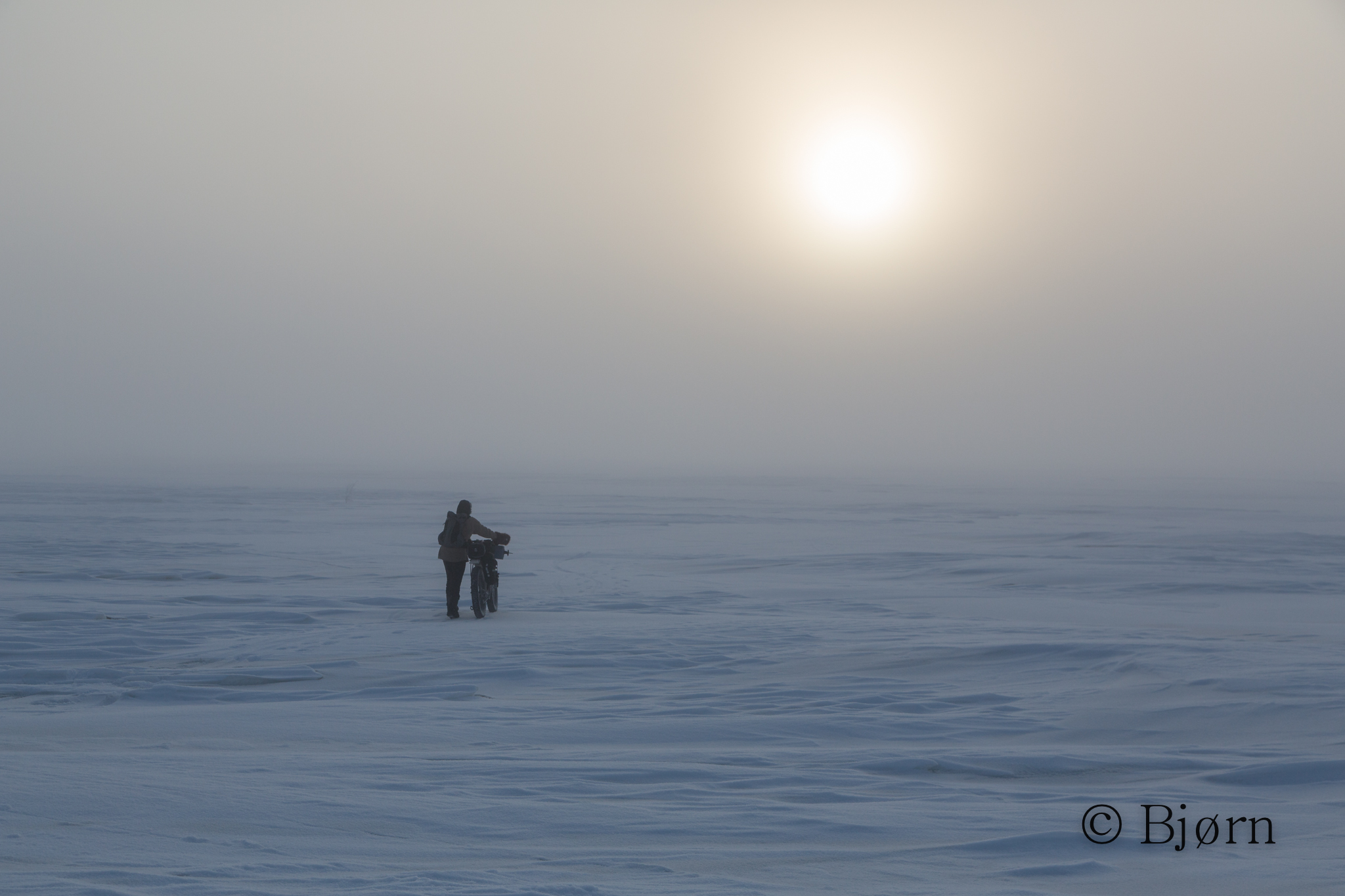
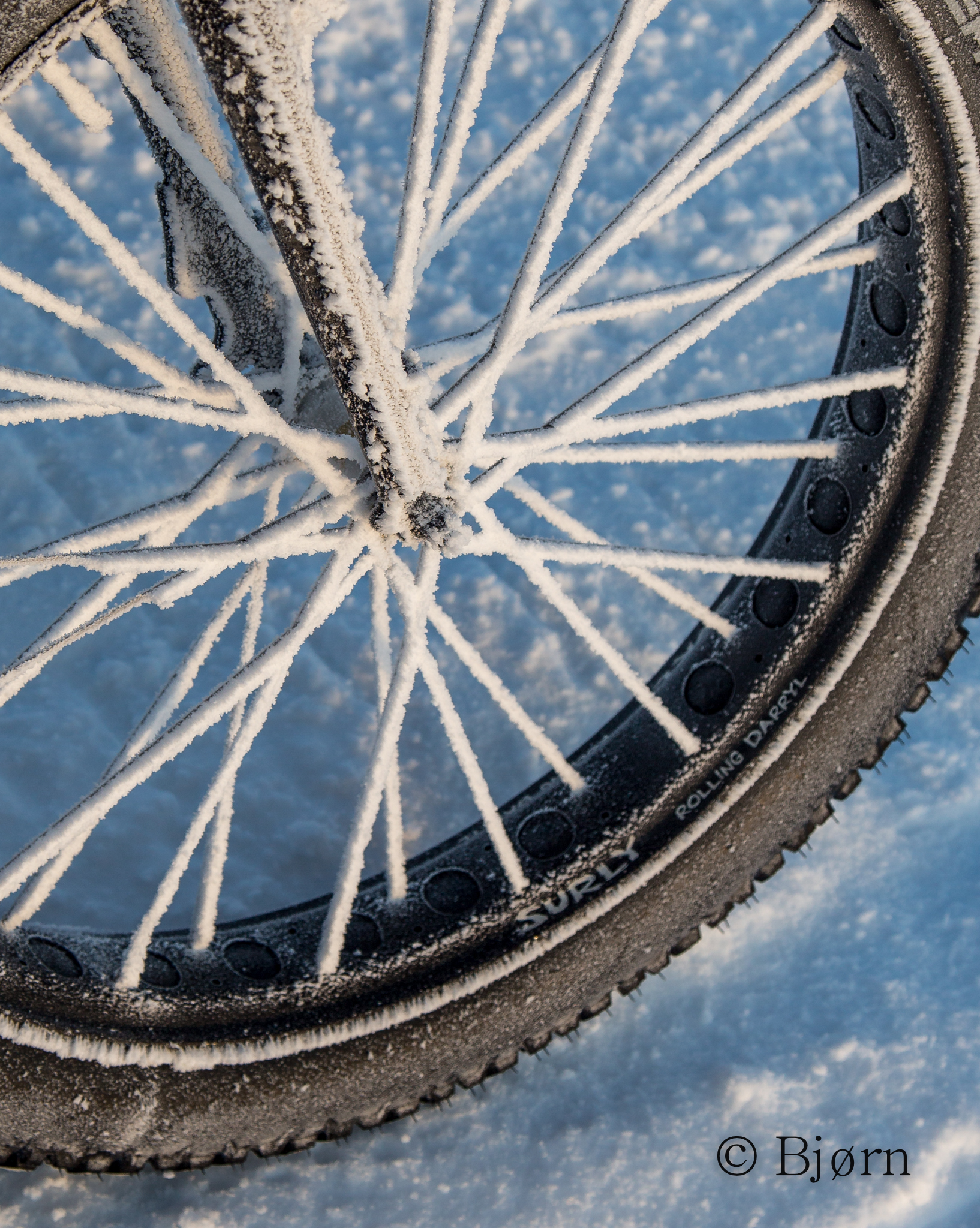
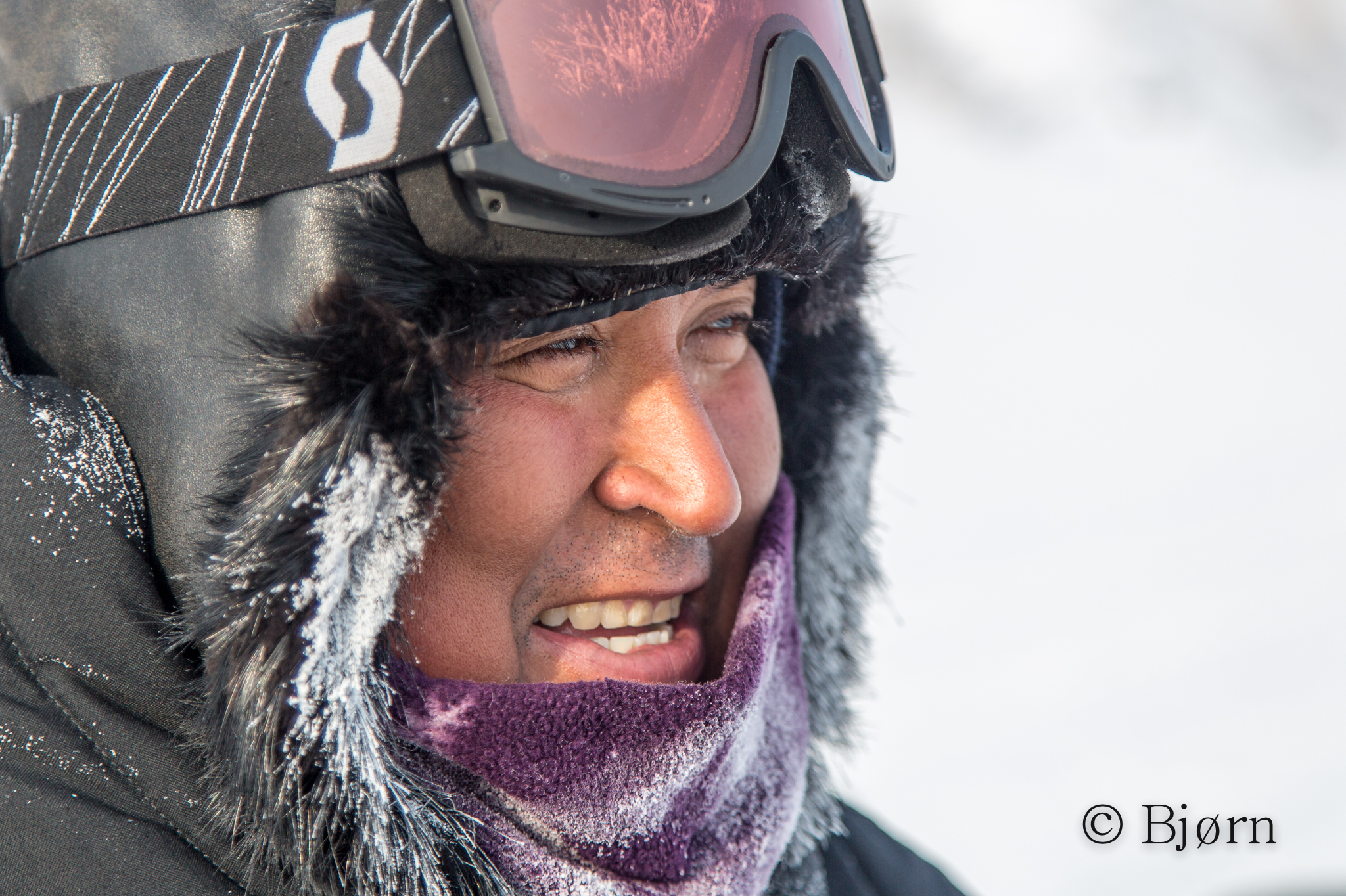
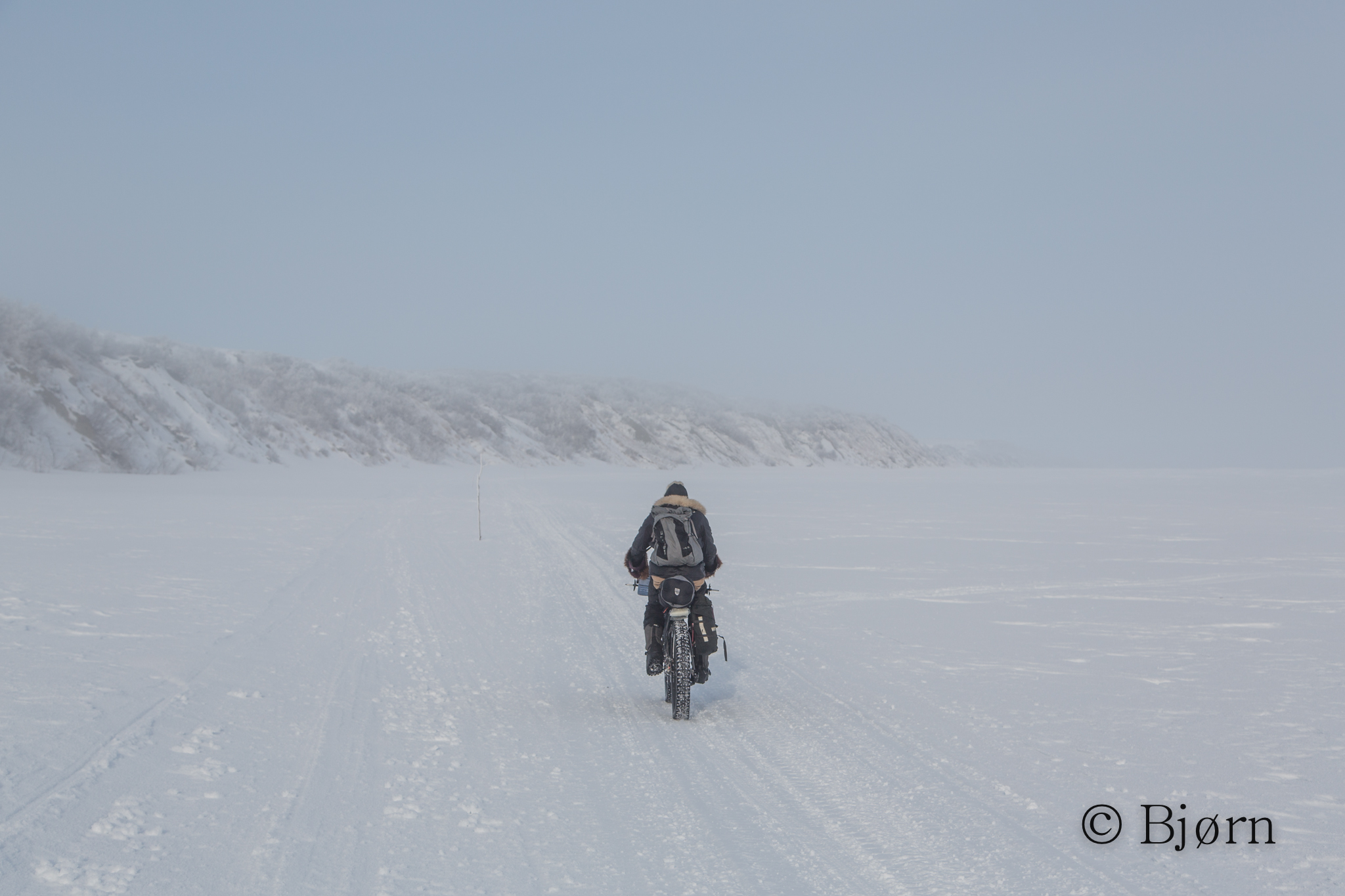
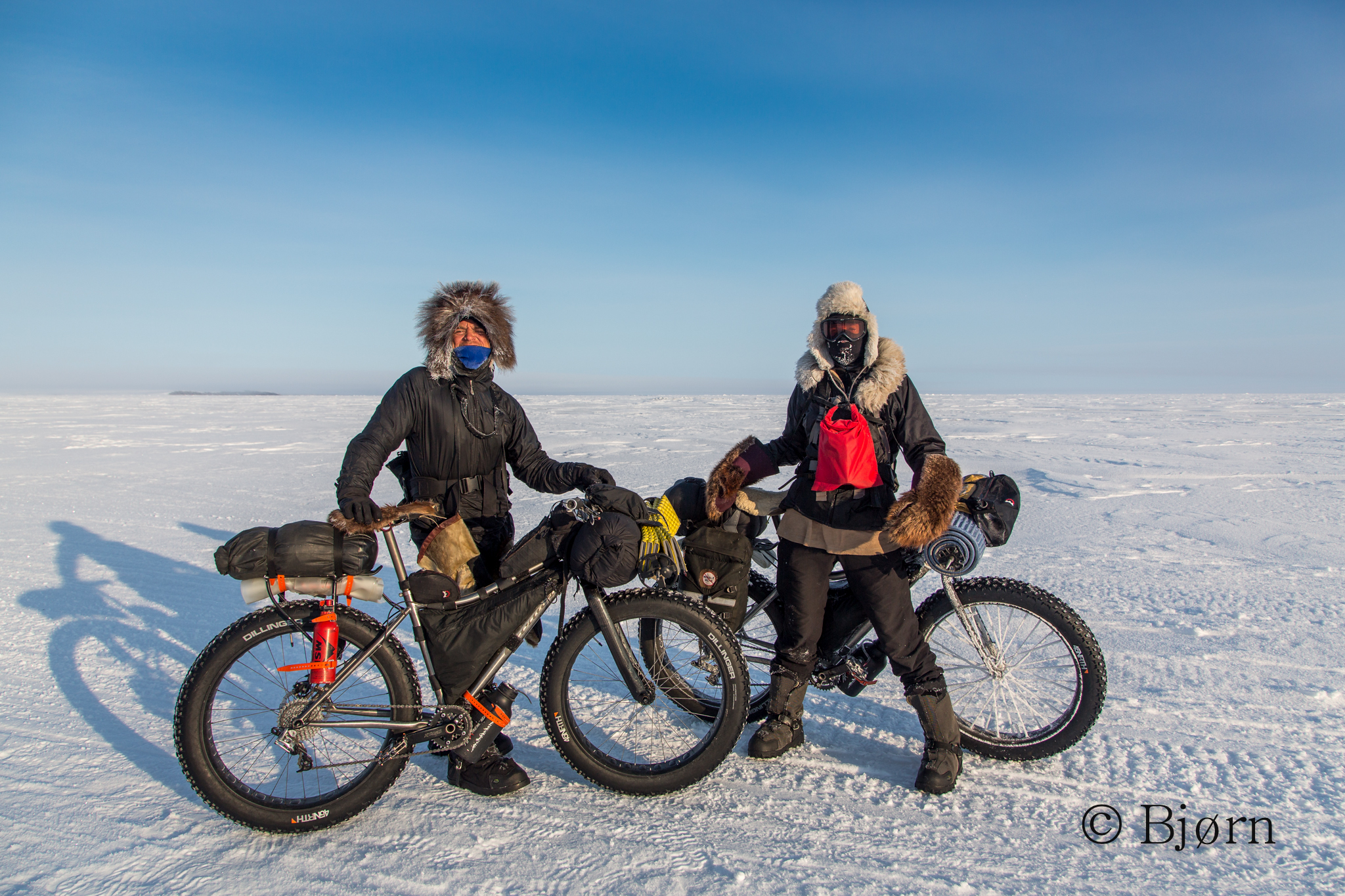
“Buckland to Kotzebue is well traveled and should be a really good trail for you guys.” This is a statement we heard since Koyuk. As we drew nearer to Buckland the same sentiment was repeated and our confidence grew.
In Buckland, we met an older man who grew up in Candle and began driving dogs at an early age. Beyond giving us trail advice, he filled us with stories of his youth, growing up in the region and running dogs. Buckland has the honor of being the Alaskan community with the most dog teams (I believe per capita) than anywhere else.
The pertinent trail description was very clear and came from the lips of a well-traveled veteran. “Follow the Buckland River to the bay, cross the bay, follow the shore of the Baldwin Peninsula until you come to a shelter cabin where the trail will cross the peninsula. From there just follow the trail to Kotzebue.” His advice sounded straight forward and within our means. “And yes, it should be well marked and well traveled.” he said.
The river was windswept, free of snow and therefore very fast. When we reached the bay there was a fork in the trail; one went east across the ice and the other west, which seemed to follow the shore – perhaps to Candle or Deering. We headed east and crossed the bay, but rather than follow the shore, the trail went on land and headed east. Moose, herds of caribou and fox filled this beautiful valley but after a few miles of due east travel we stopped. “This seems wrong.” Kim said, and I agreed. For the first time on the trip, we backtracked and returned to the intersection.
Back at the fork, we headed west for a few miles but this too didn’t seem to fit the description – at all. The trail seemed to stay on the north side of the Seward Peninsula and we needed to cross the sea ice to the other side. Totally confounded, we returned, once again, to the intersection and hoped someone would be out, that could set us straight.
After an evening of meditation we convinced ourselves that the first trail seemed to make the most sense and once again we headed east. Past our previous turn-around we saw a herd of caribou in the many hundreds. We tried to be stealthy on our approach but they saw us and ran. When they did, it sounded like a roar of thunder and the light snow was kicked up into a cloud in their wake. Amazing.
Eventually we came to a shelter cabin. The morning was chilly so we went in, lit a fire and hoped to find clues to settle our uncertainty. We found none. Our insecurity became oppressive but we decided to continue on. “Well no one has ever biked to Selawik either.” I joked.
Outside, the distant sound of an approaching snowmachine was welcome. We went out and waited for it. “Nope, this trail goes to Selawik.” The driver said. “You need to go back to the fork and follow it.” “Most Bucklanders have been using another trail that you will eventually intersect while crossing the bay.” Our sage wisdom had come from someone who had not been out this year and because of rough shore ice people had opted for a new route across the bay.
The next day we were on the east shore of the Baldwin Peninsula - heading north to our final destination. We were both excited to be within hours of completion. No one has ever done what we were doing and getting to Kotzebue, under our own steam, has been an ethereal goal for so long but I couldn’t help feeling a little sad too. This has become life; wake up and ride - stop and camp – repeat. The further north we go the better it gets, just like I imagined it would. I was tired but I wasn’t ready to stop.
In the early part of the day, two hunters stopped to inspect our bikes and inquire with the usual line of questions: “Where did you come from?” being the most common. Through the goggles, parka, hood and hat I thought I recognized one of the hunters; “Are you Seth Kantner?” I asked one of them. “Yes” he said.
Winters in Alaska are long and dark. As a result, I developed a love for reading at a young age. There are too many “favorite” authors of mine to list but when the categorization is whittled some, it becomes easier. Without question, if someone askes me what my favorite Alaskan books are, I respond, “‘Ordinary Wolves’ by Seth Kantner and ‘Shadows on the Koyukuk’ about Sidney Huntington.” We met the giants of Alaskan lore, while on the trail. Perfect.
Our next encounter was with a hunter returning to Buckland after delivering caribou meat to elders in Kotzebue. He wore the face of a man who lived life on the trail – sunburnt cheeks, well-worn clothing and a generous smile, that stretched to his ears. “Do you like muktuk?” he asked. “Yes we do.” He reached into his sled and opened an Alaska Commercial shopping bag and handed us a fat chunk of this precious energy food. At the next shelter cabin we ate nearly half of it and we didn’t need to snack for the rest of the day.
Because the Baldwin Peninsula is low elevation, the wind generators of Kotzebue were visible for hours. When we finally passed them and came to the end of the trail, at an intersection of road, we stopped to savor the moment and Kim began to cry. The little trail in Knik, where we had parked our car, 37 days earlier, had led us to the Arctic.
Beyond being a bike trip, this felt like something more. More than on any other trip I felt like we had tapped into something - something very hard to describe. It felt like we had tapped into the heart of Alaska, and it seemed strong and full of life.
Click here for slideshow.



